Exploring Echinocereus Cacti: 146 Varieties Illustrated
Are you a fan of cute little cacti? If so, you’ll definitely want to bring Echinocereus cacti into your home! These special cacti have tall spines and a cool cylindrical shape that sets them apart. The best part is, they’re small, beautiful, and super easy to take care of. And guess what? They even have some fancy flowers that will make you fall in love with them even more! Get ready to add a touch of adorable to your house and balcony with these delightful Echinocereus cacti!
Contents
- 1 Types of Echinocereus Cacti
- 1.1 Echinocereus acanthosetus
- 1.2 Echinocereus adustus
- 1.3 Echinocereus arizonicus
- 1.4 Echinocereus armatus
- 1.5 Echinocereus barthelowanus
- 1.6 Echinocereus bonkerae
- 1.7 Echinocereus brandegeei
- 1.8 Echinocereus bristolii
- 1.9 Echinocereus canus
- 1.10 Echinocereus carmenensis
- 1.11 Echinocereus chloranthus
- 1.12 Echinocereus cinerascens
- 1.13 Echinocereus coccineus
- 1.14 Echinocereus coccineus subsp. rosei
- 1.15 Echinocereus ctenoides
- 1.16 Echinocereus dasyacanthus
- 1.17 Echinocereus davisii
- 1.18 Echinocereus engelmannii
- 1.19 Echinocereus enneacanthus
- 1.20 Echinocereus fendleri
- 1.21 Echinocereus fitchii
- 1.22 Echinocereus grandis
- 1.23 Echinocereus gurneyi
- 1.24 Echinocereus klapperi
- 1.25 Echinocereus knippelianus
- 1.26 Echinocereus koehresianus
- 1.27 Echinocereus laui
- 1.28 Echinocereus longisetus
- 1.29 Echinocereus mapimiensis
- 1.30 Echinocereus maritimus
- 1.31 Echinocereus nicholii
- 1.32 Echinocereus nivosus
- 1.33 Echinocereus pacificus
- 1.34 Echinocereus parkeri
- 1.35 Echinocereus pectinatus
- 1.36 Echinocereus pentalophus
- 1.37 Echinocereus polyacanthus
- 1.38 Echinocereus poselgeri
- 1.39 Echinocereus primolanatus
- 1.40 Echinocereus pseudopectinatus
- 1.41 Echinocereus pulchellus
- 1.42 Echinocereus reichenbachii
- 1.43 Echinocereus rigidissimus
- 1.44 Echinocereus russanthus
- 1.45 Echinocereus scheeri
- 1.46 Echinocereus schmollii
- 1.47 Echinocereus sciurus
- 1.48 Echinocereus scopulorum
- 1.49 Echinocereus sharpii
- 1.50 Echinocereus spinigemmatus
- 1.51 Echinocereus stramineus
- 1.52 Echinocereus subinermis
- 1.53 Echinocereus triglochidiatus
- 1.54 Echinocereus viereckii
- 1.55 Echinocereus viridiflorus
- 1.56 Echinocereus waldeisii
- 1.57 Echinocereus websterianus
- 1.58 Echinocereus weinbergii
- 2 Taking Care of Echinocereus Cactus
- 3 Propagating Echinocereus Plants
Types of Echinocereus Cacti
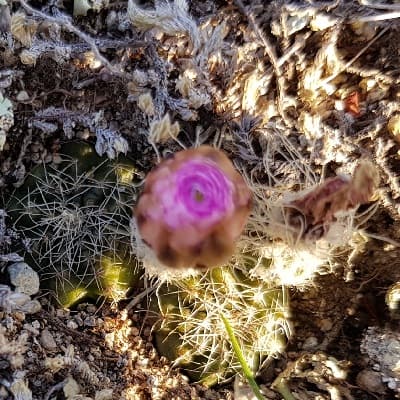
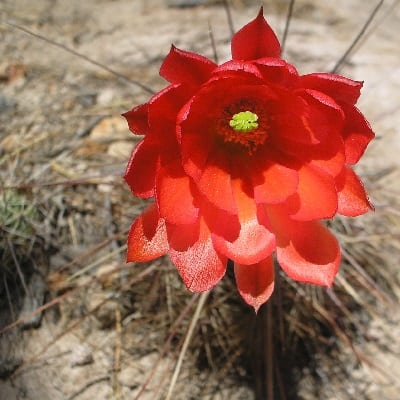
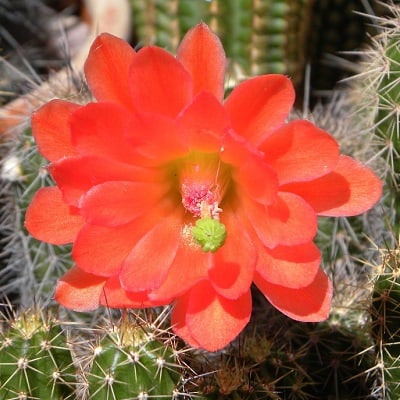
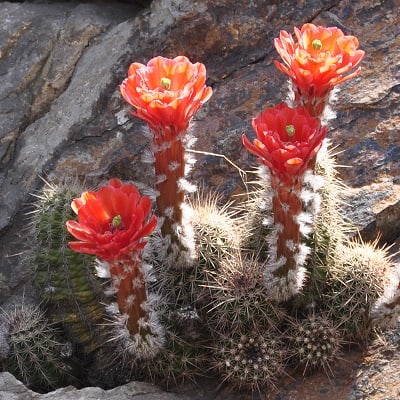
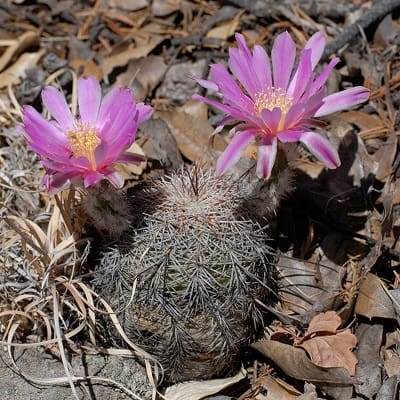
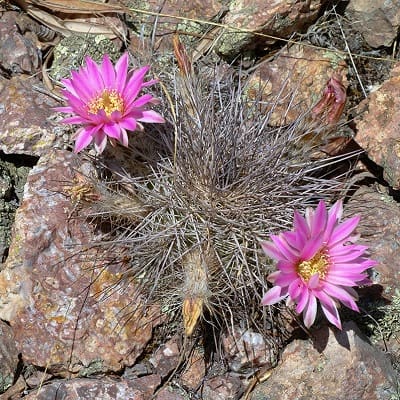
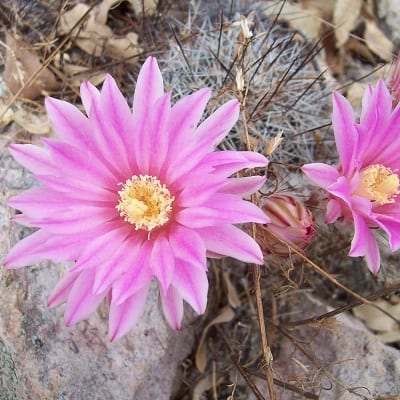
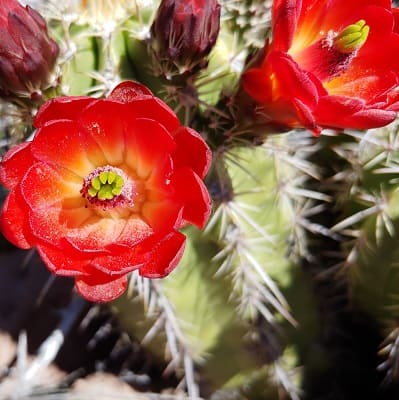
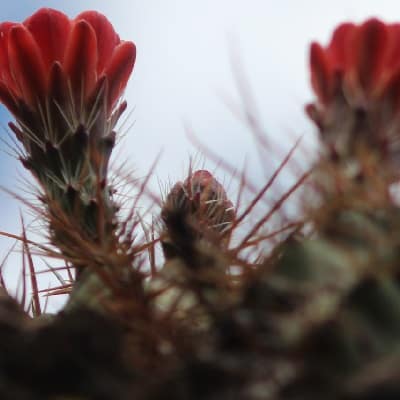
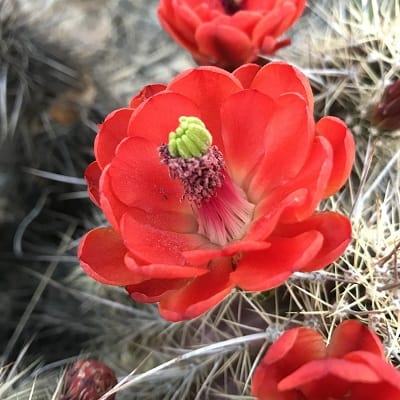
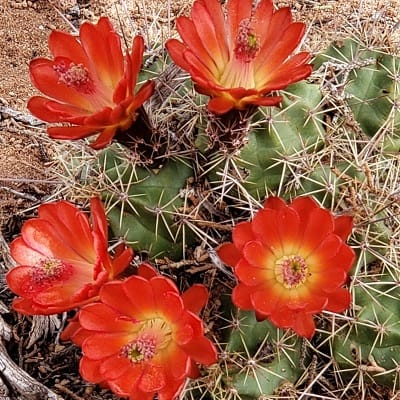
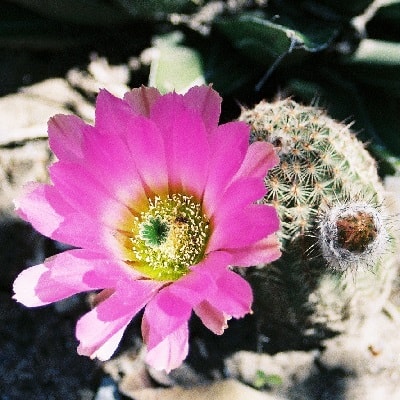
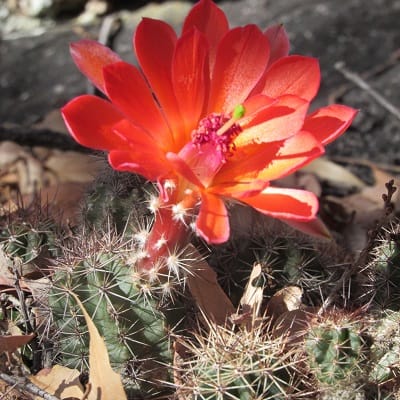
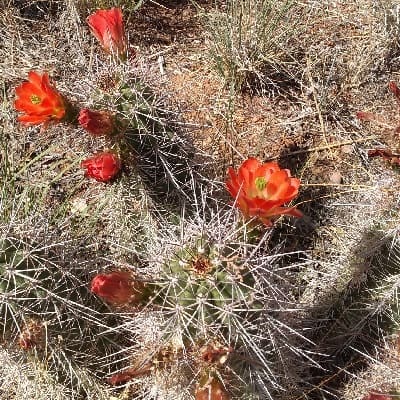
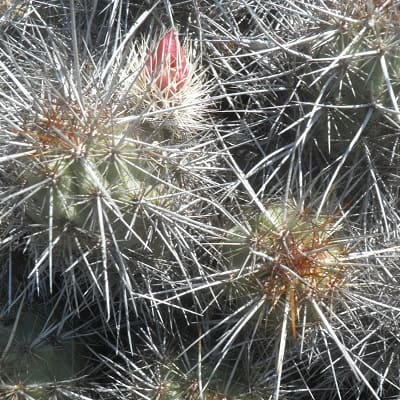
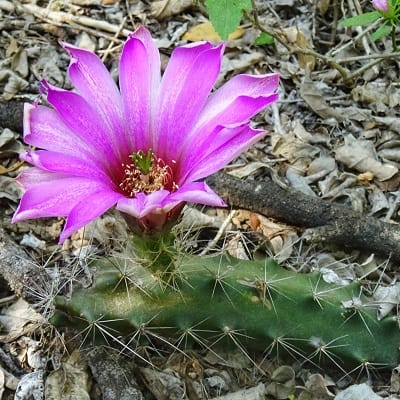
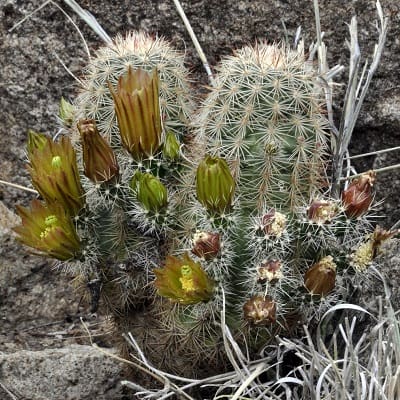
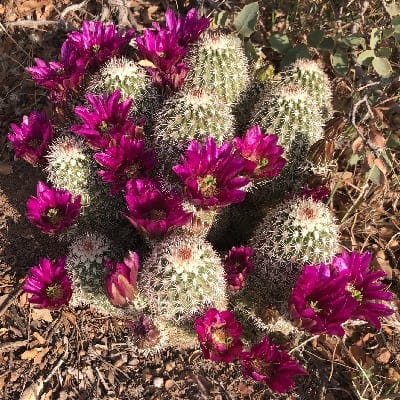
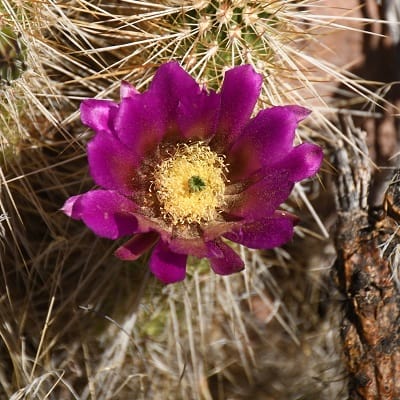
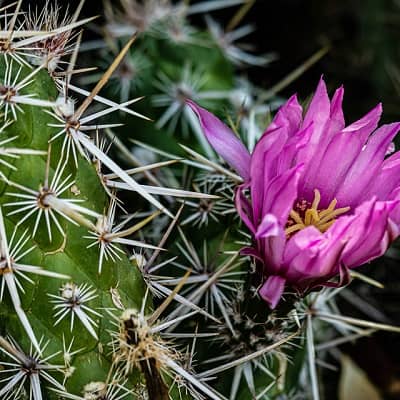
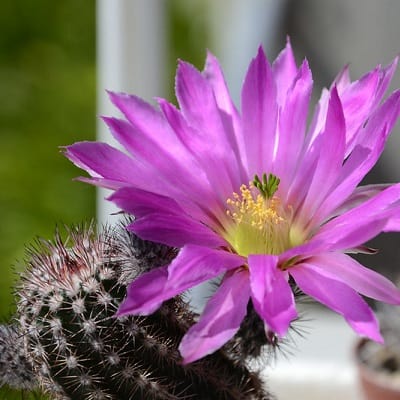
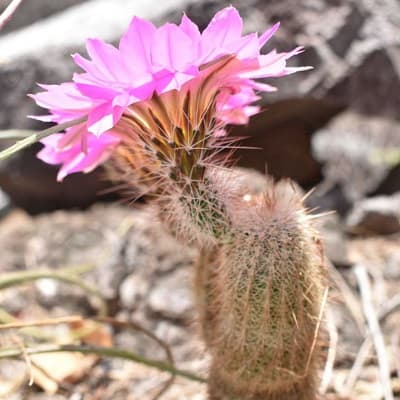
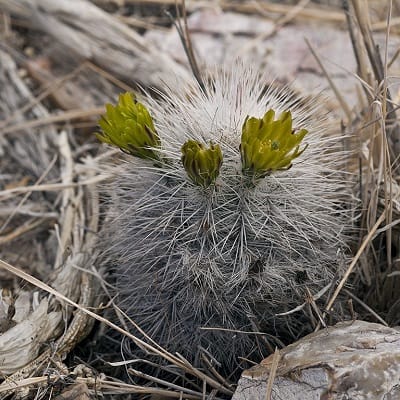
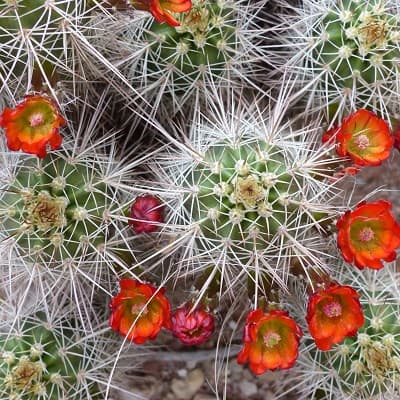
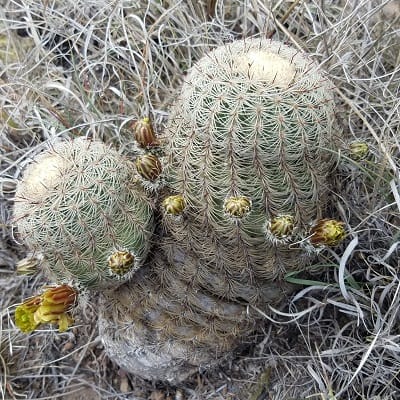
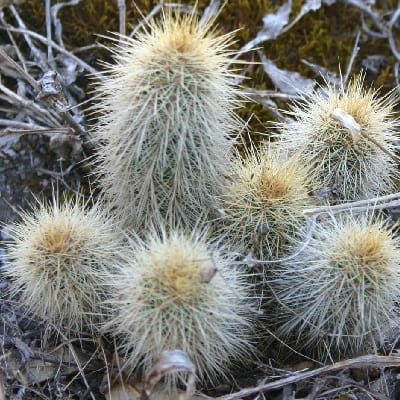
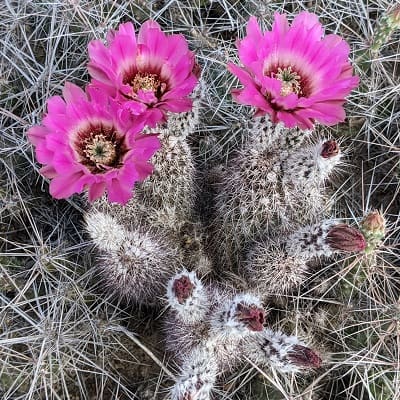
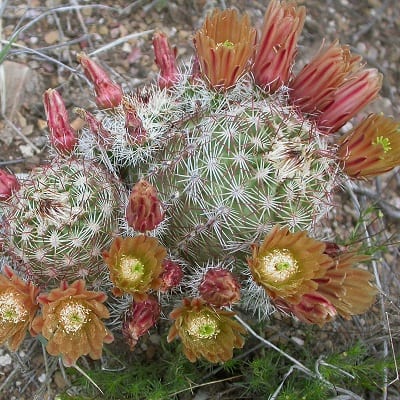
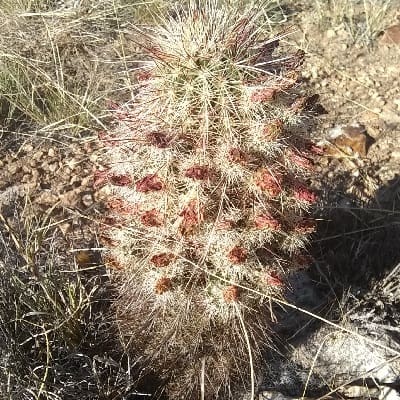
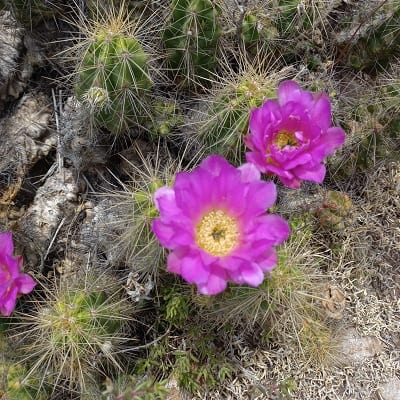
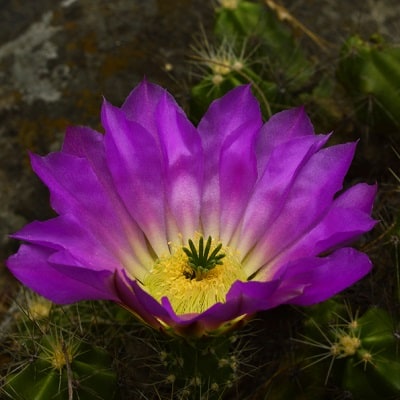
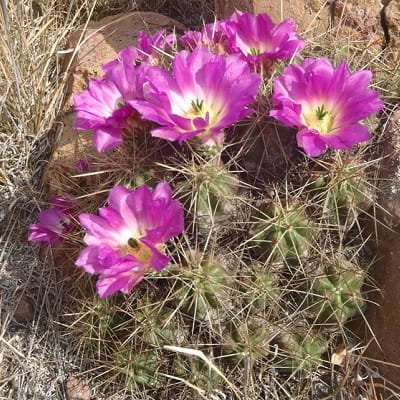
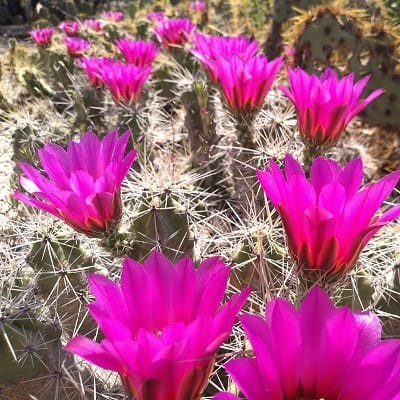
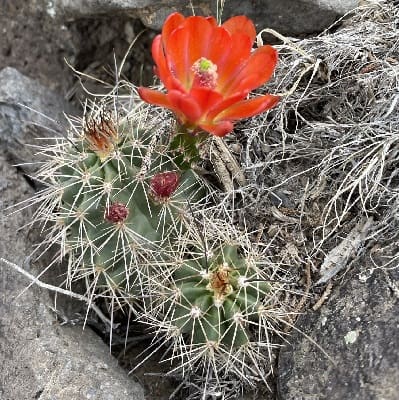
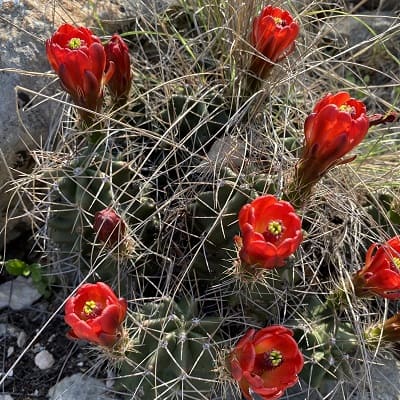
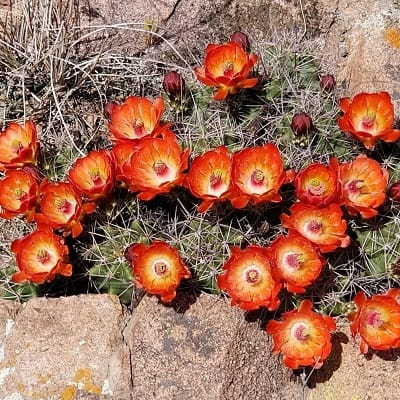
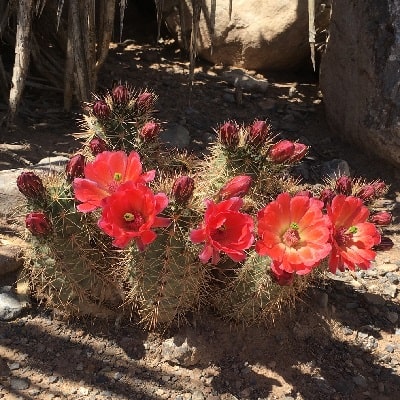
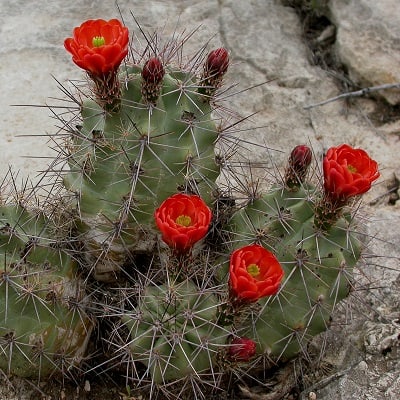
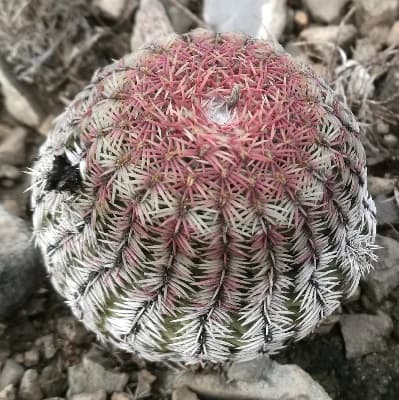
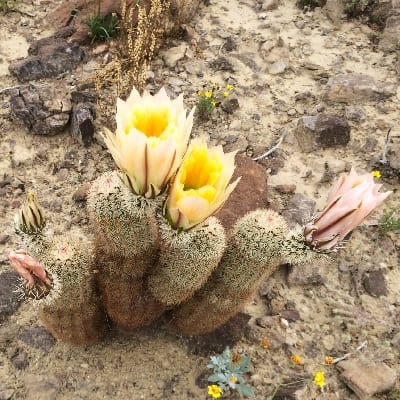
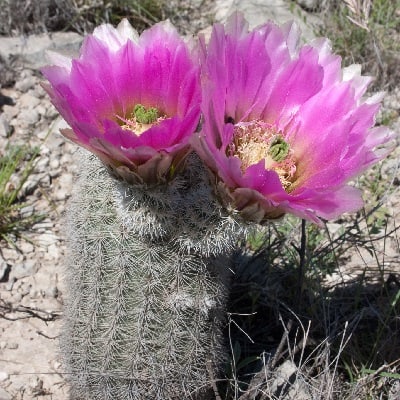
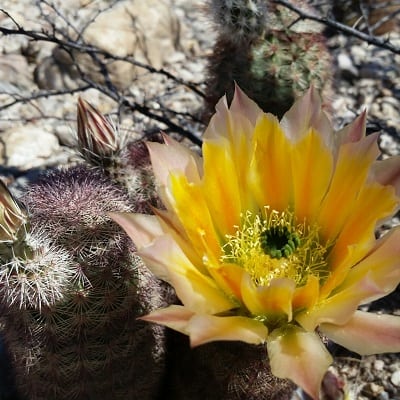
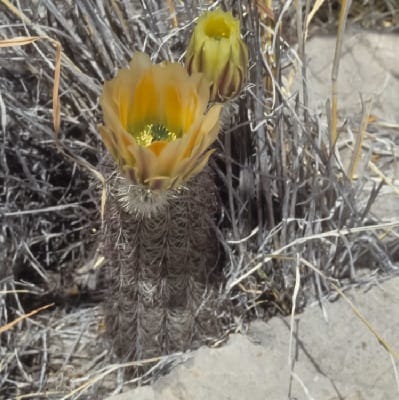
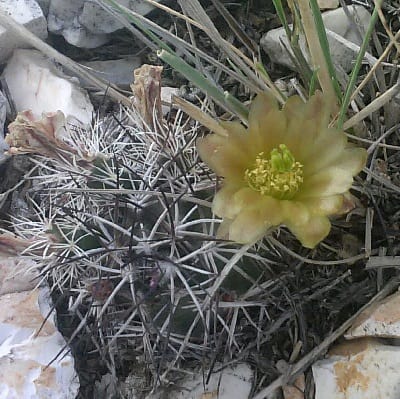
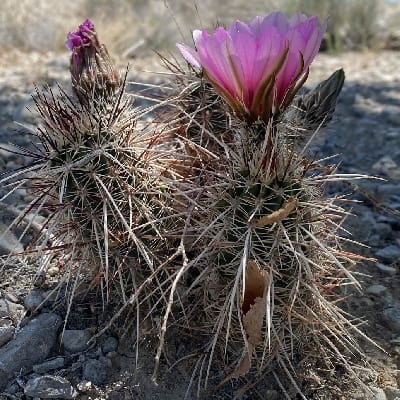
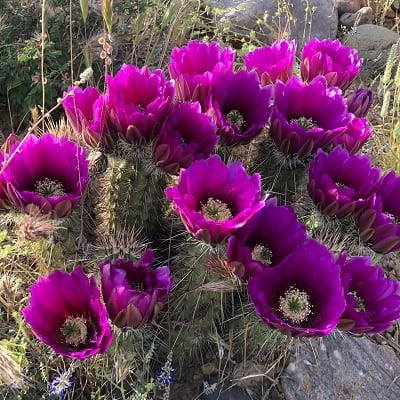
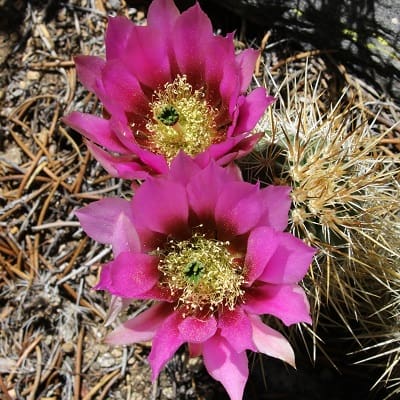
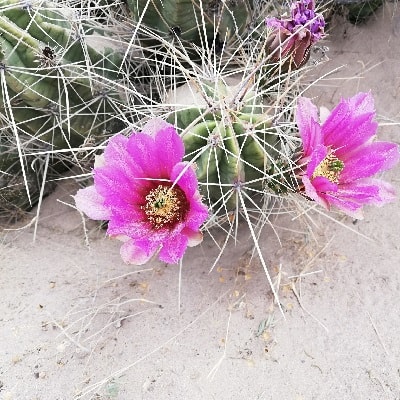
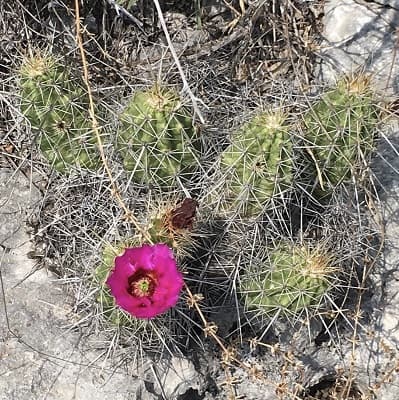
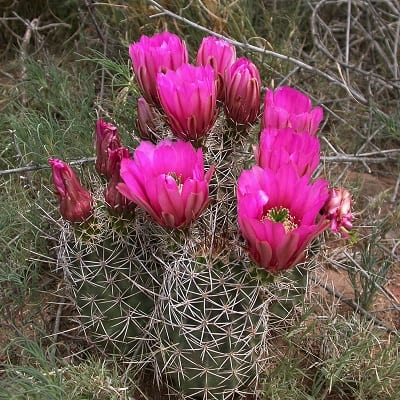
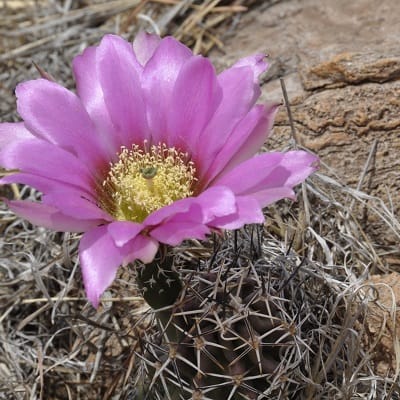
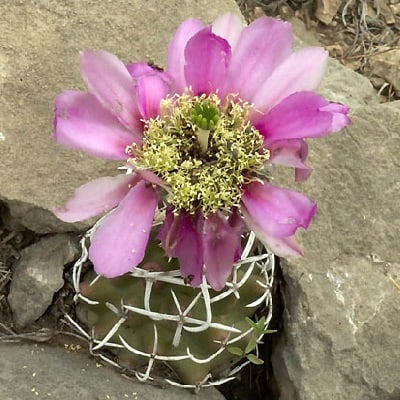
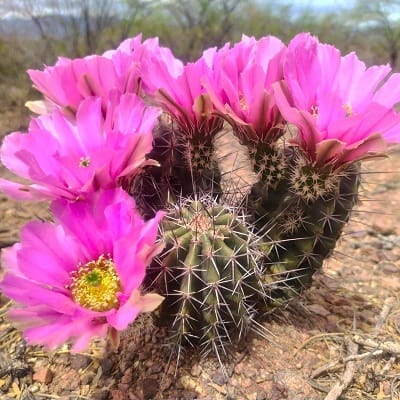
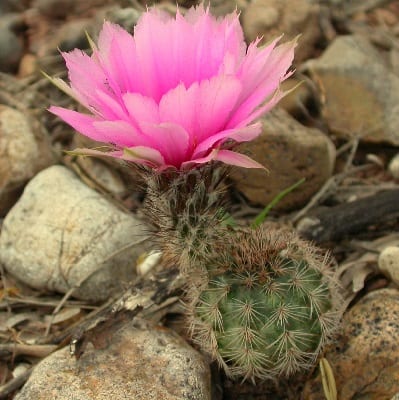
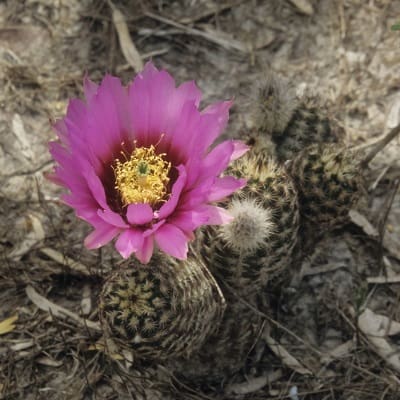
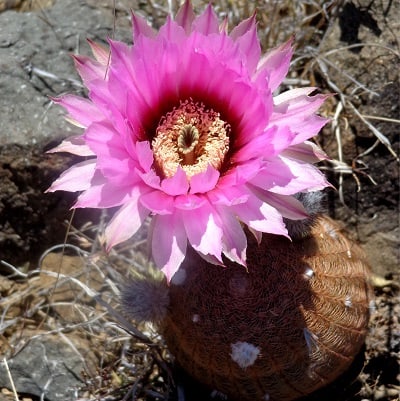
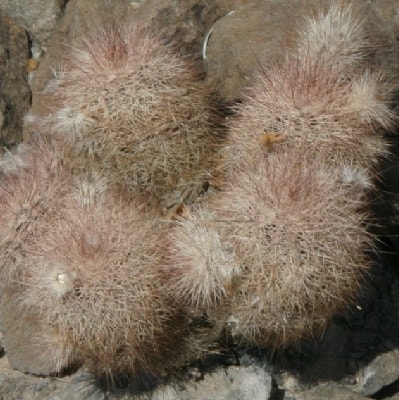
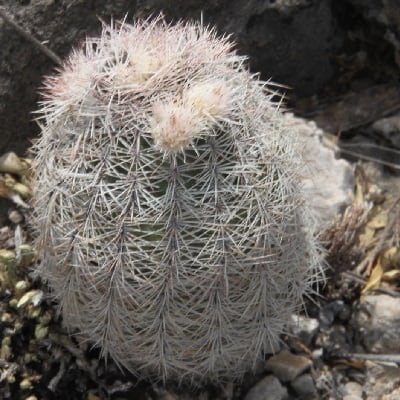
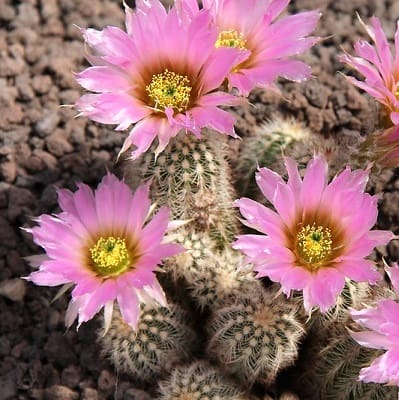
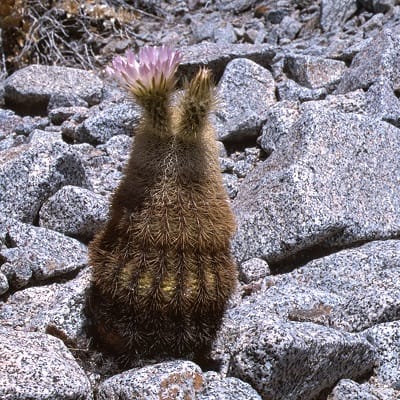
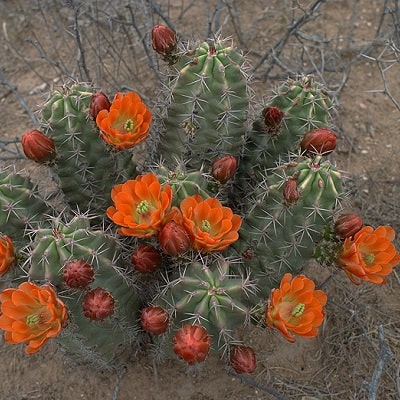
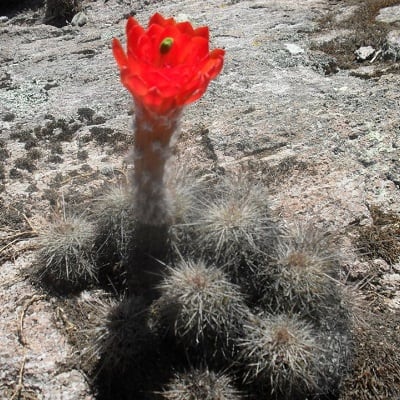
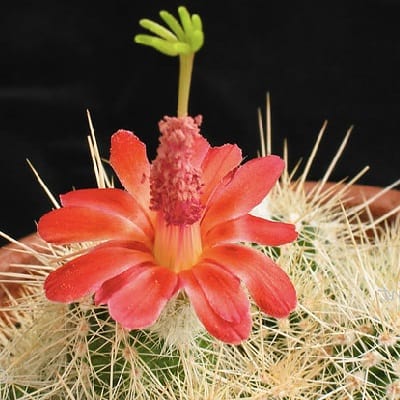
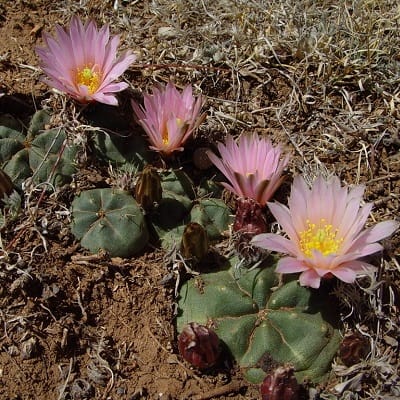
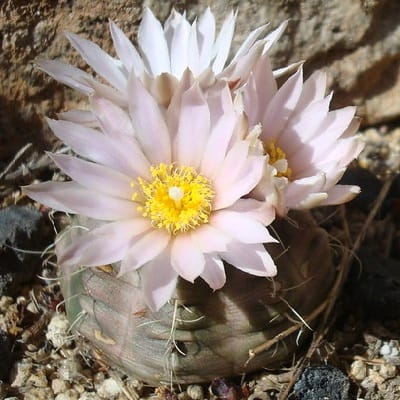
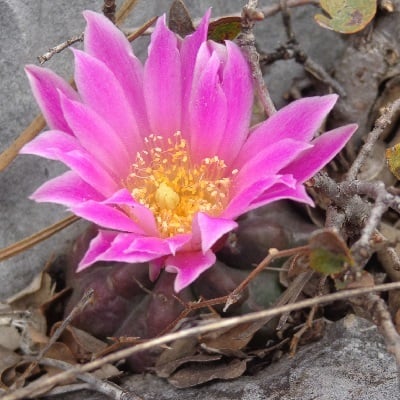
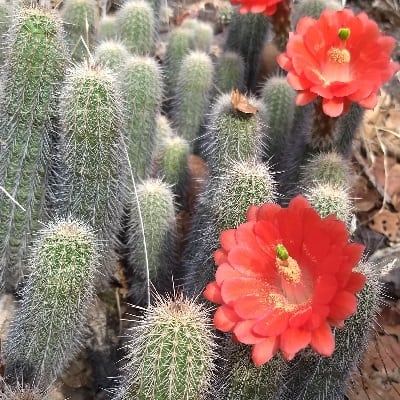
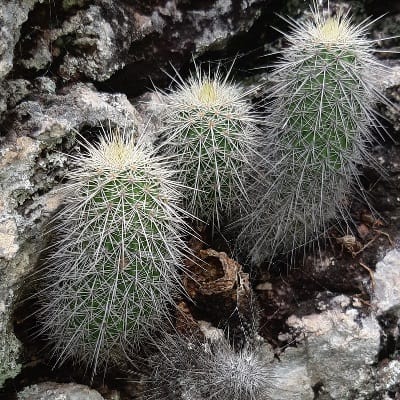
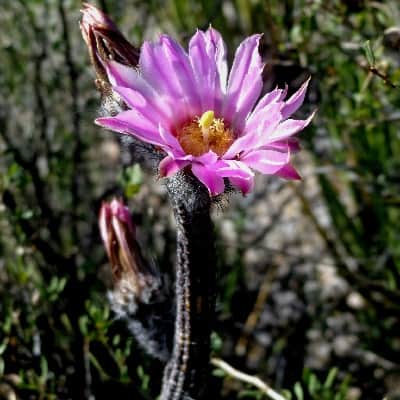
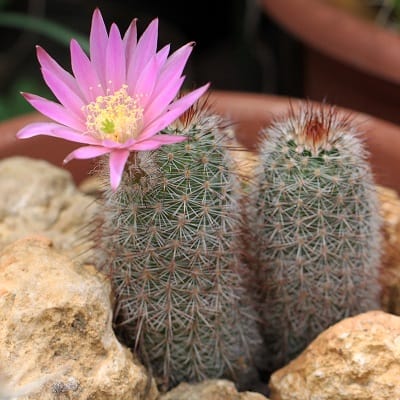
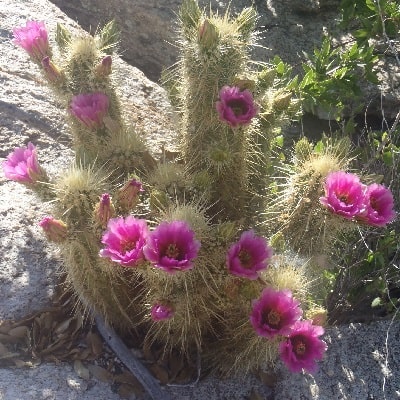
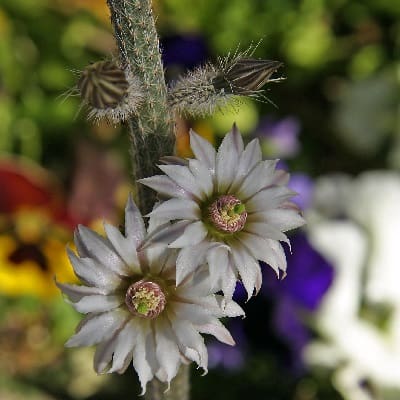
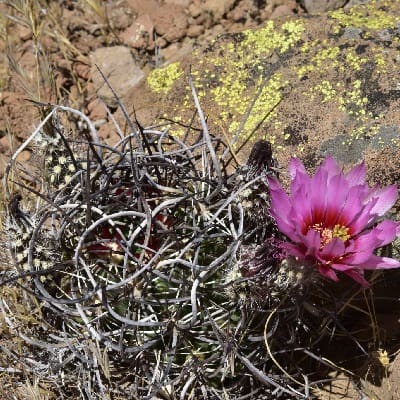
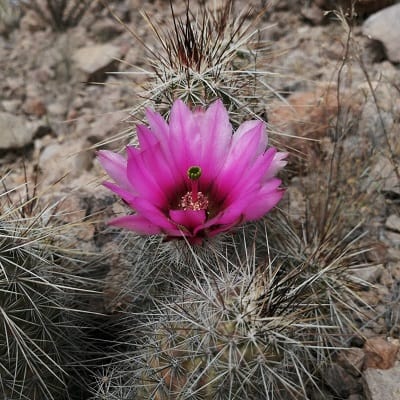
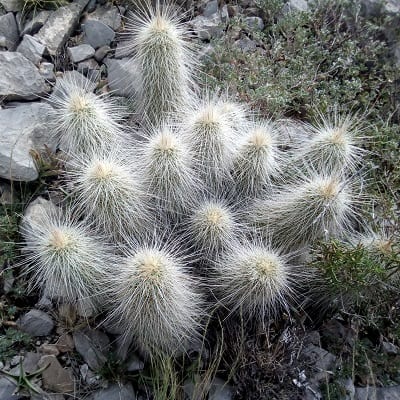
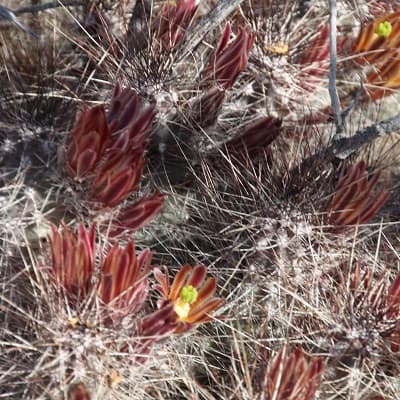
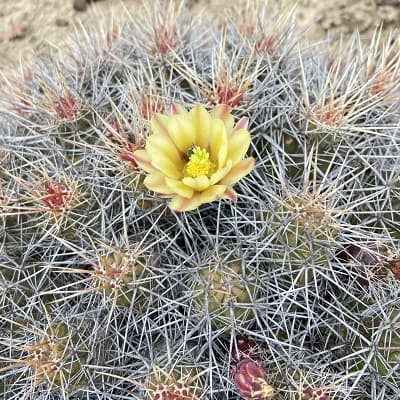
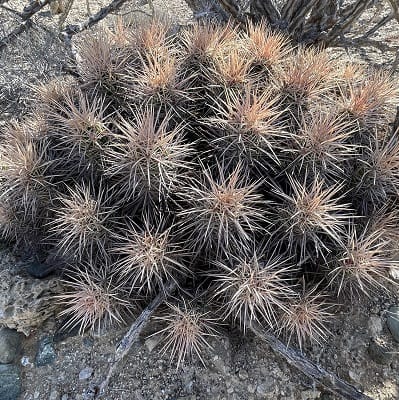
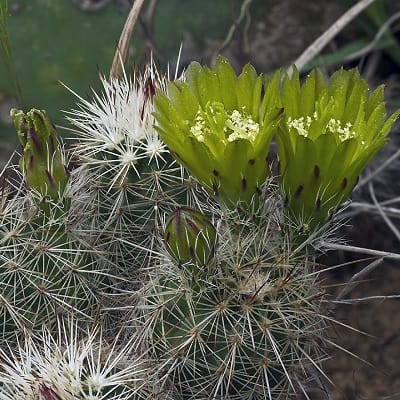
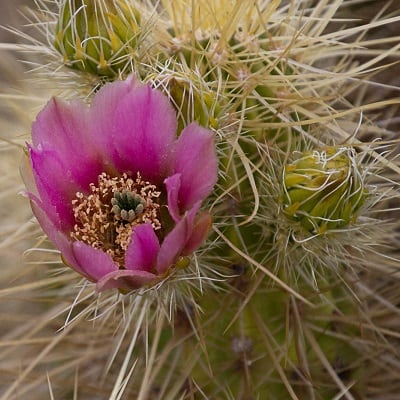
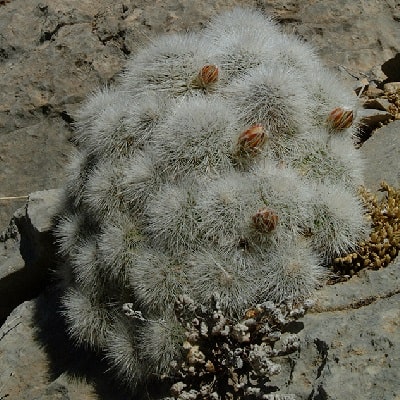
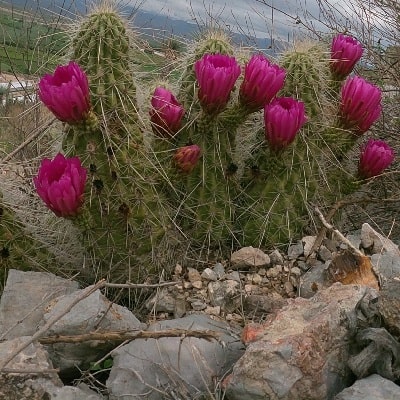
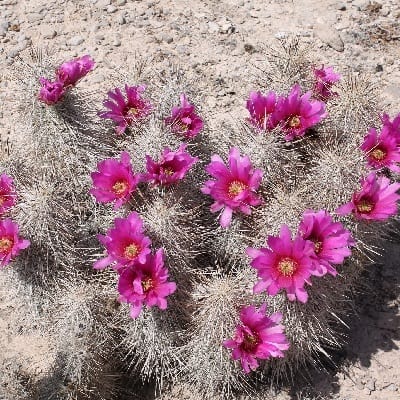
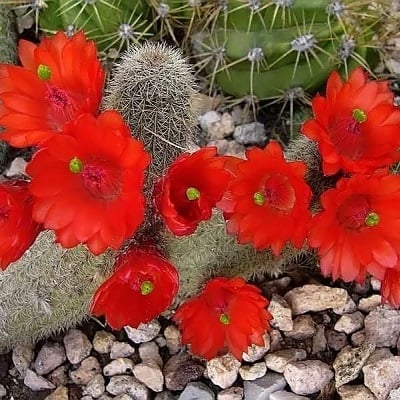
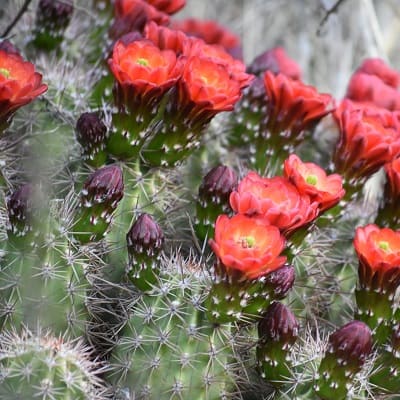
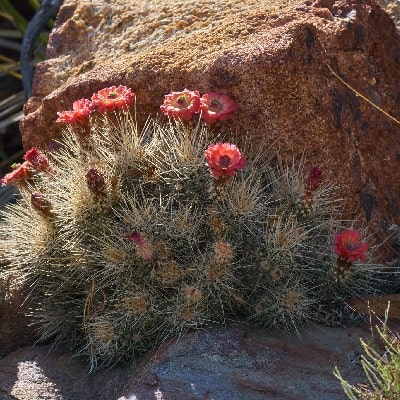
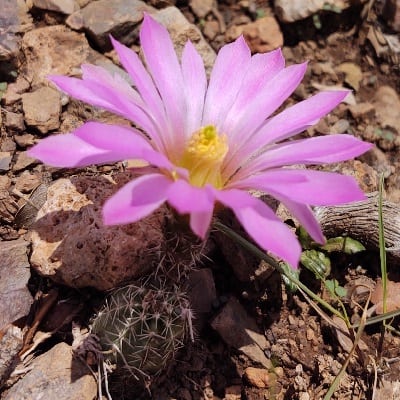
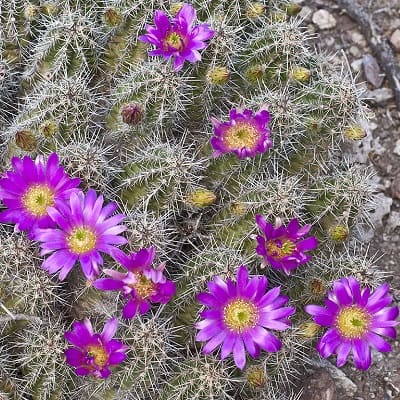
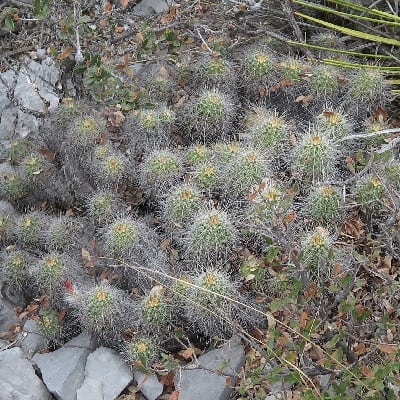
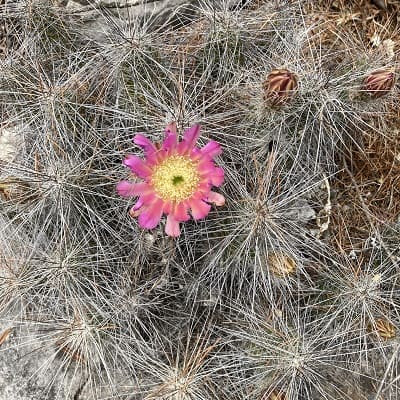
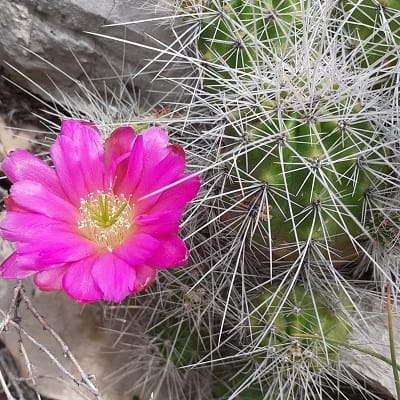
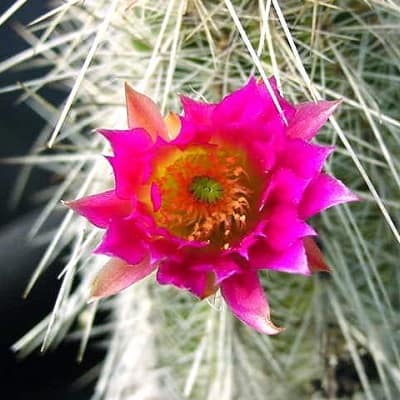
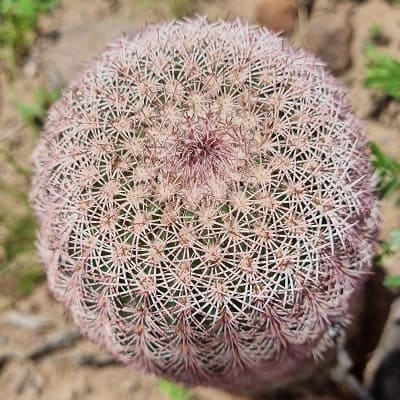
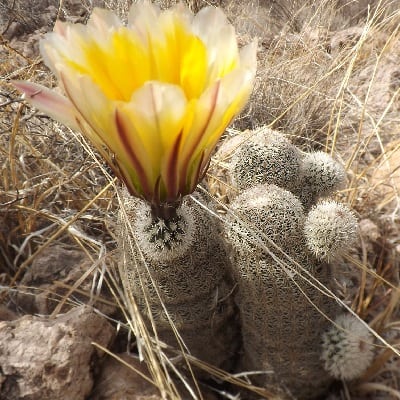
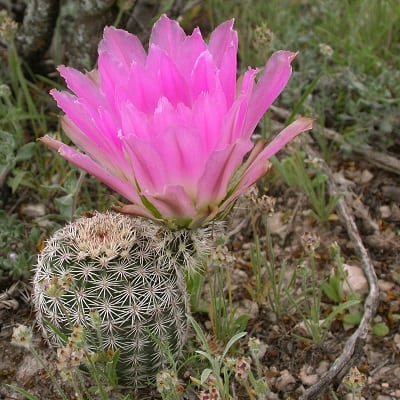
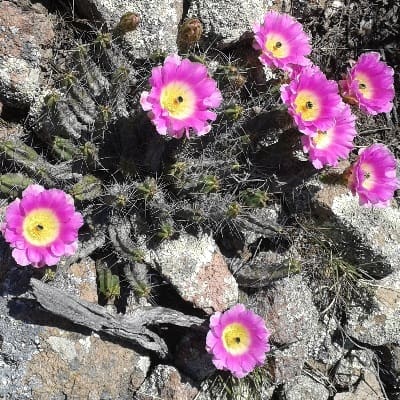
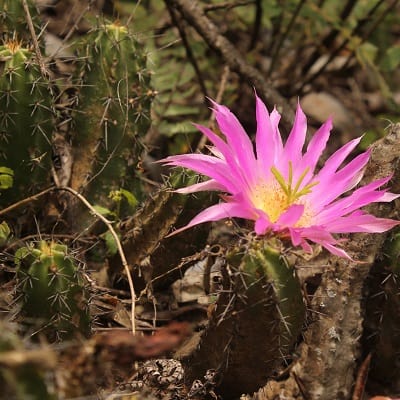
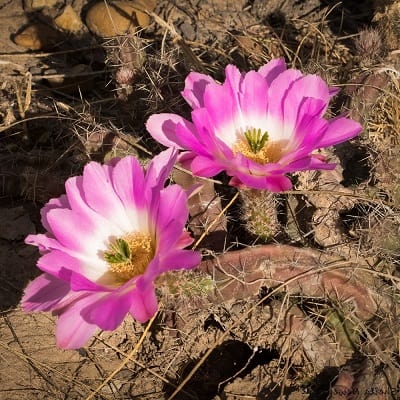
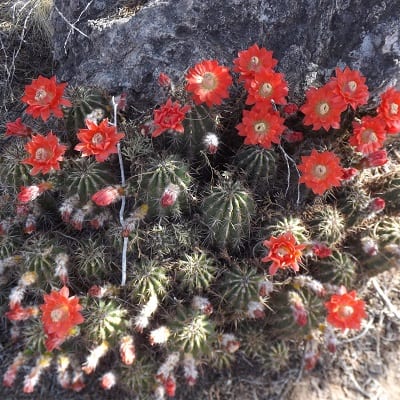
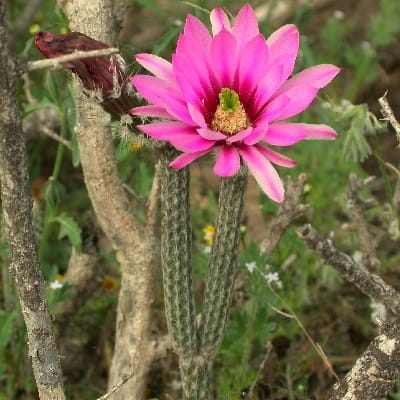
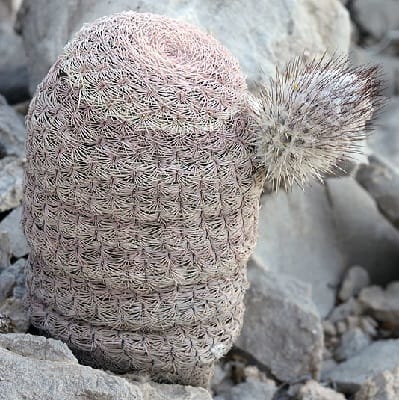
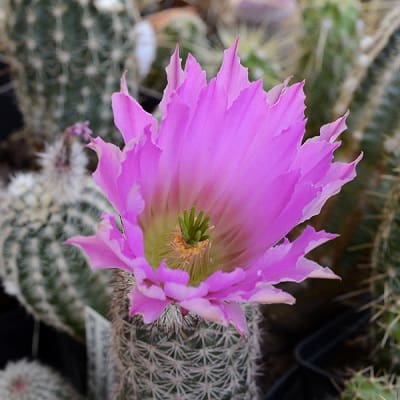
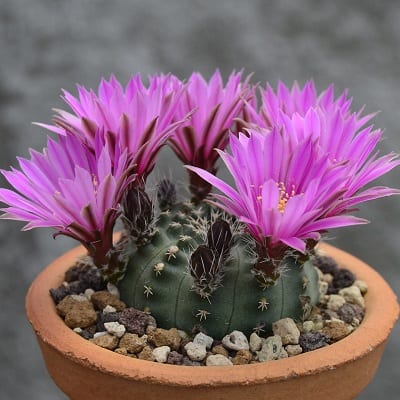
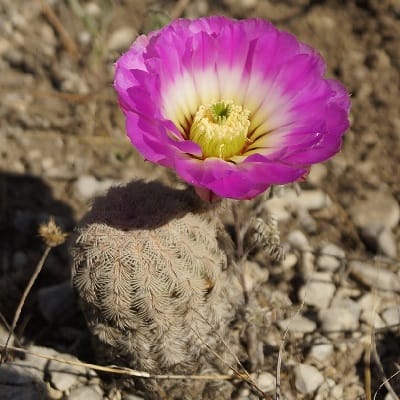
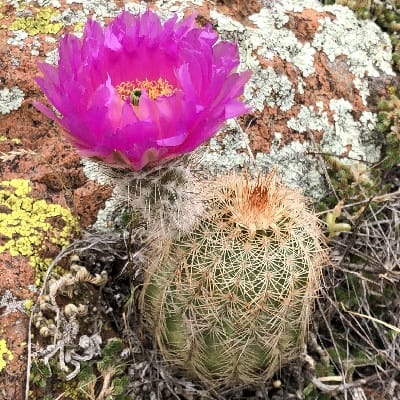
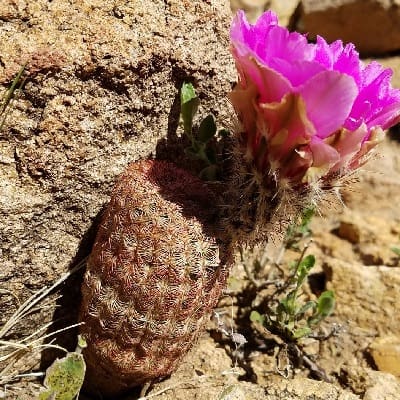
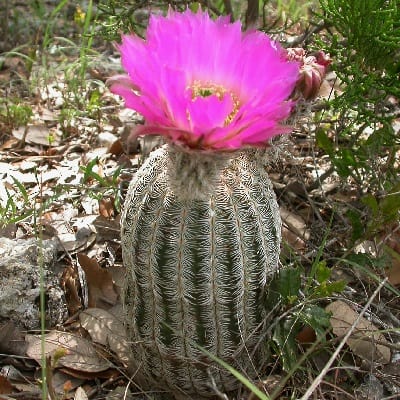
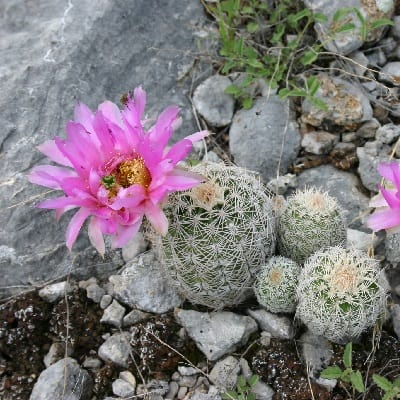
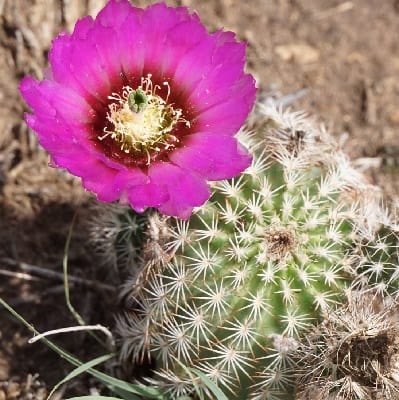
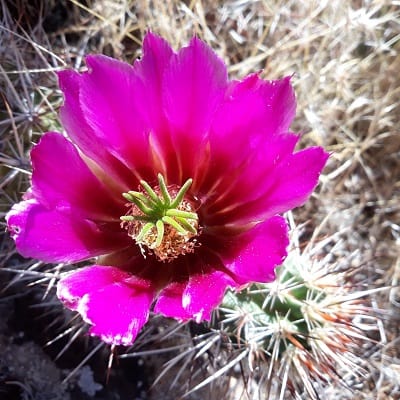
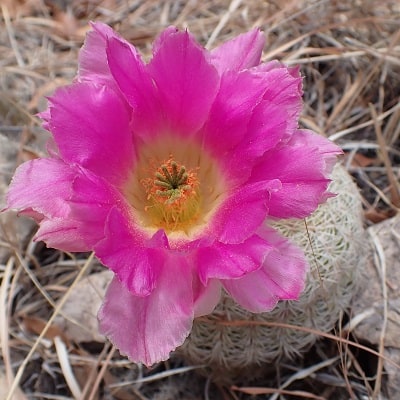
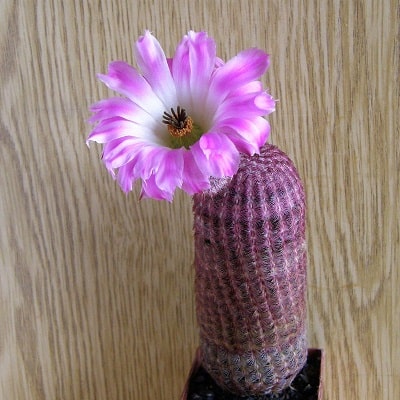
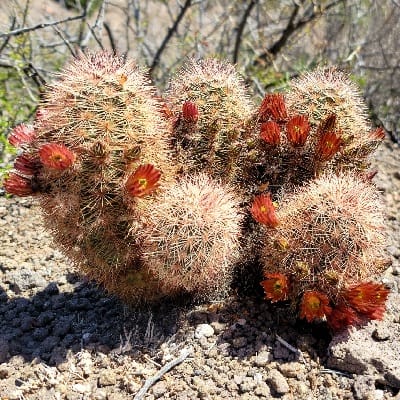
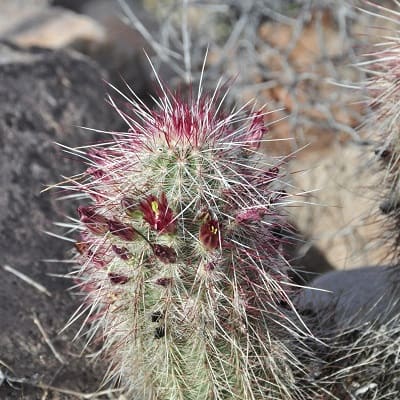
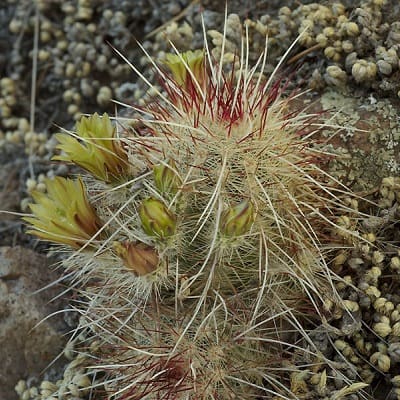
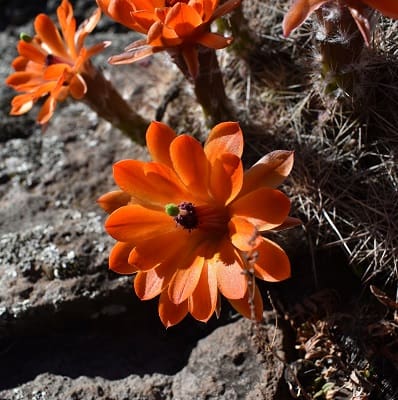
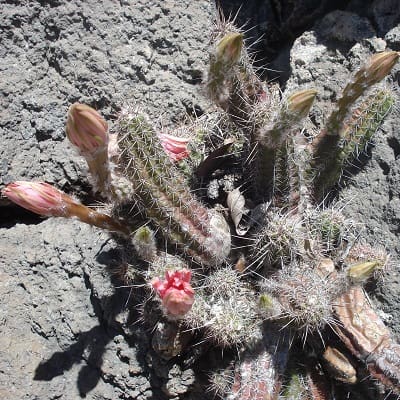
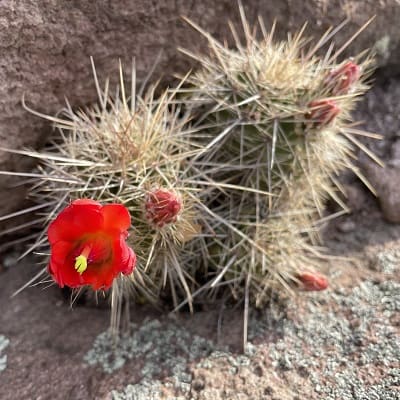
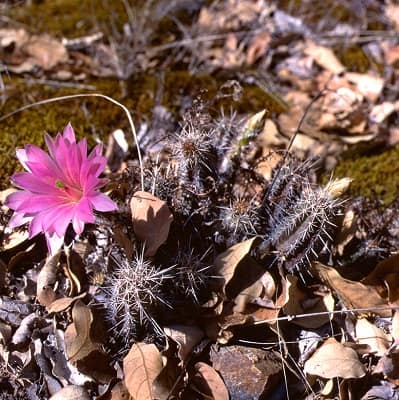
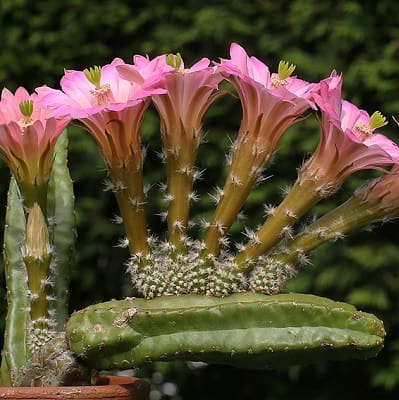
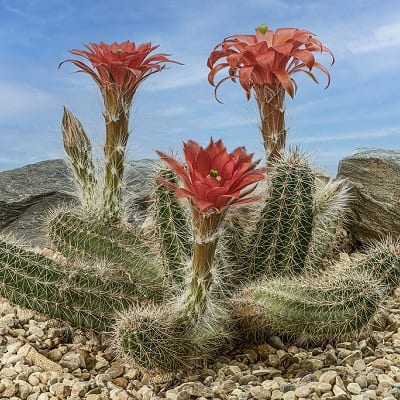
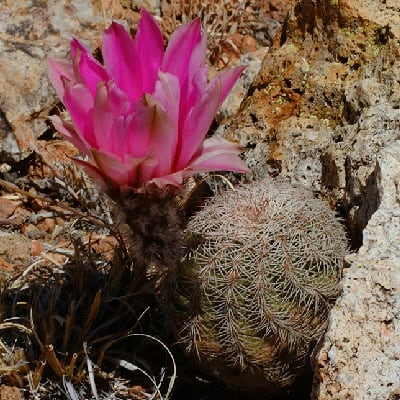
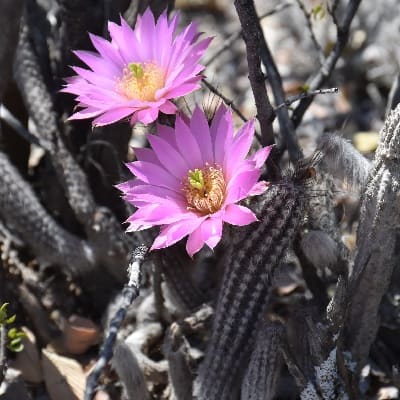
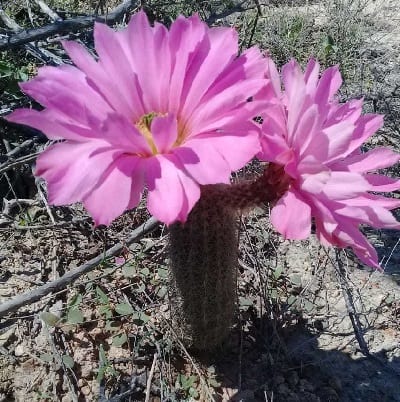
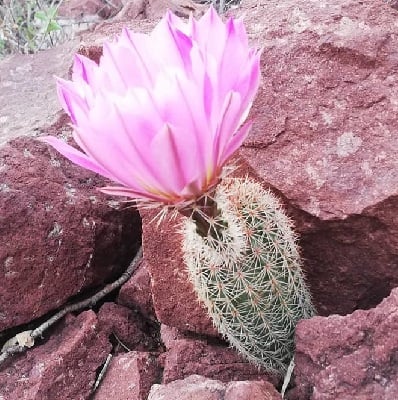
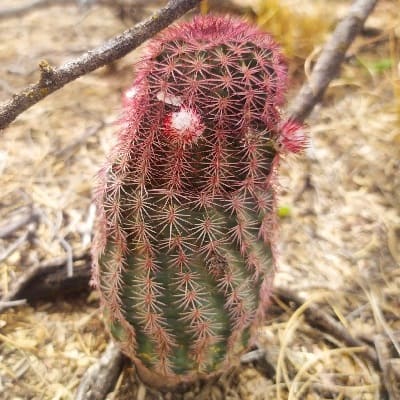
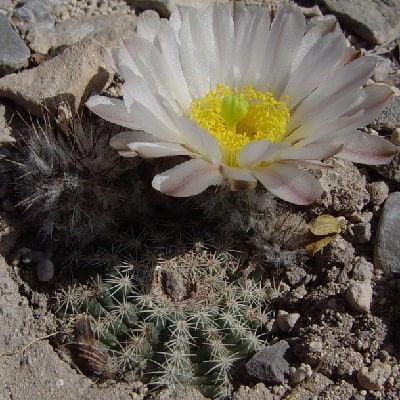
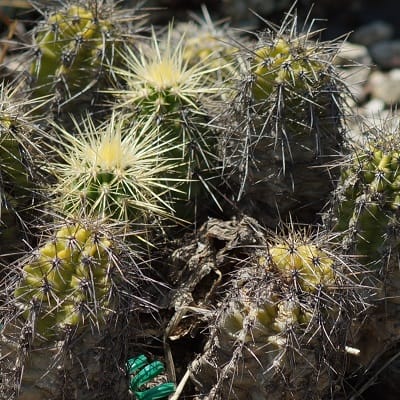
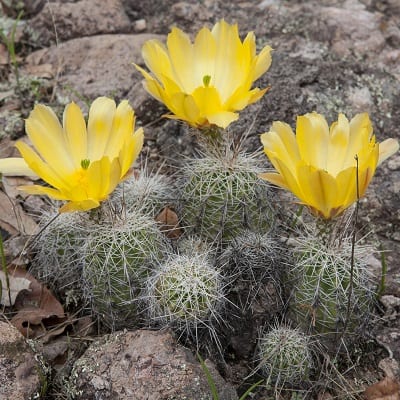
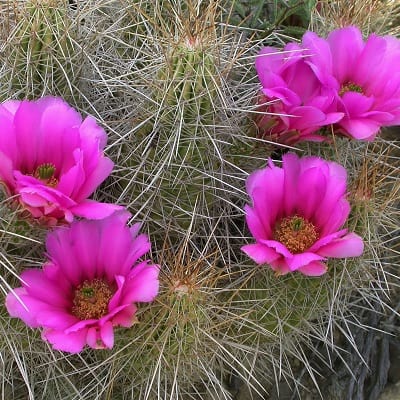
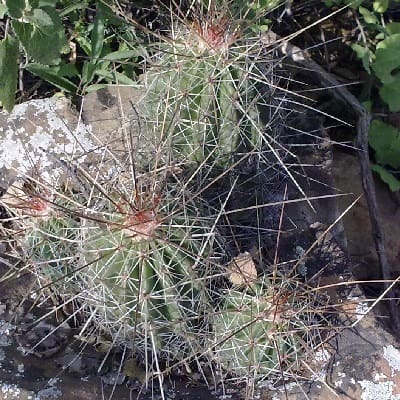
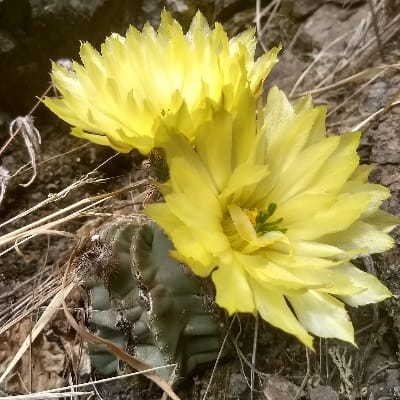
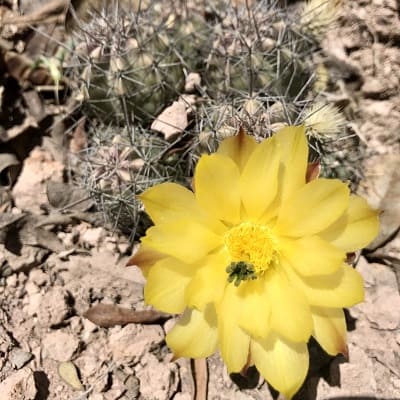
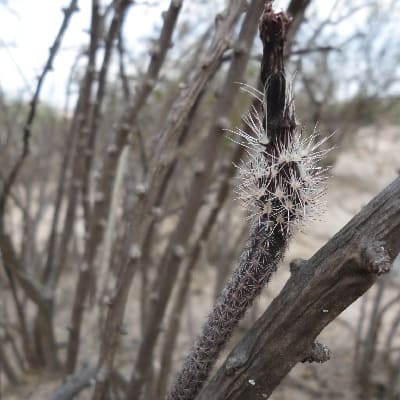
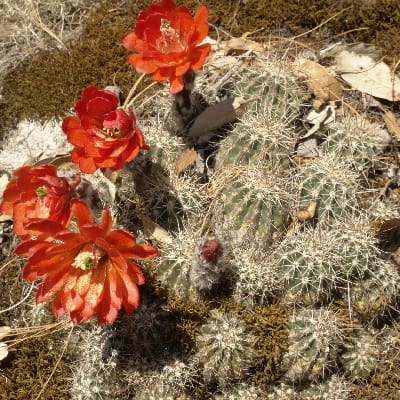
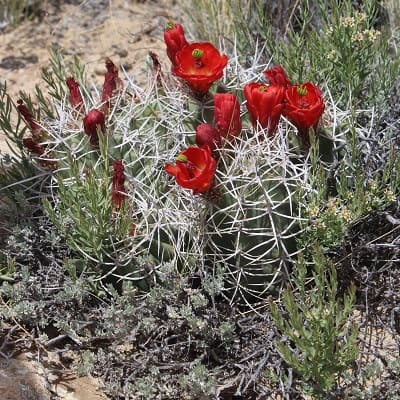
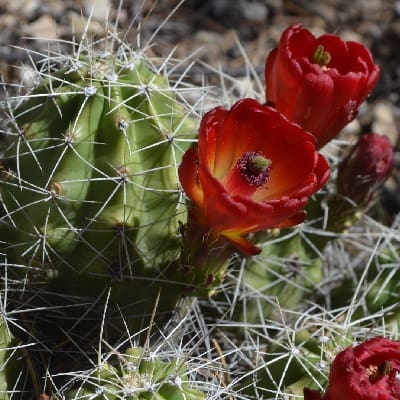
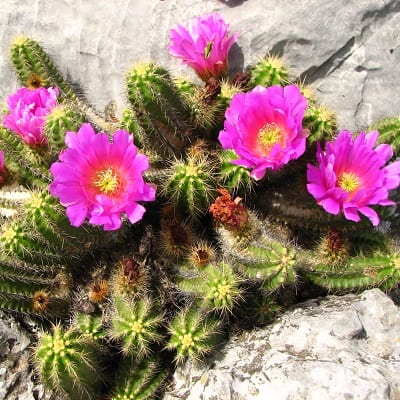
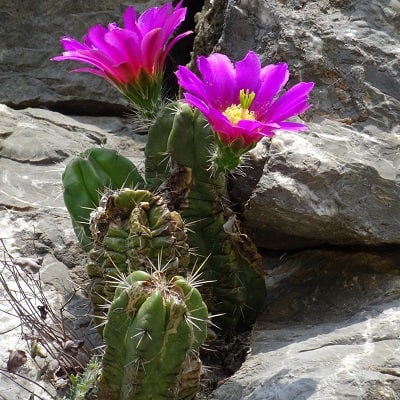
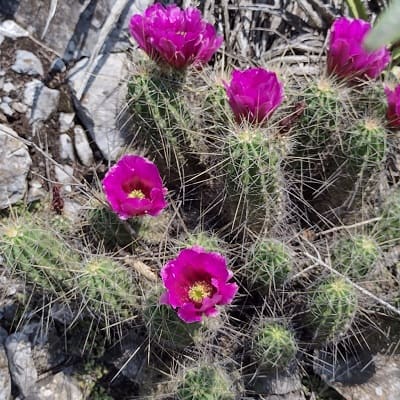
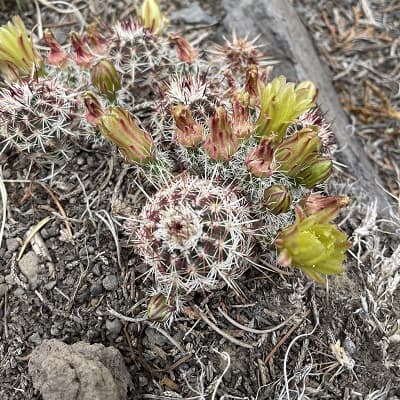
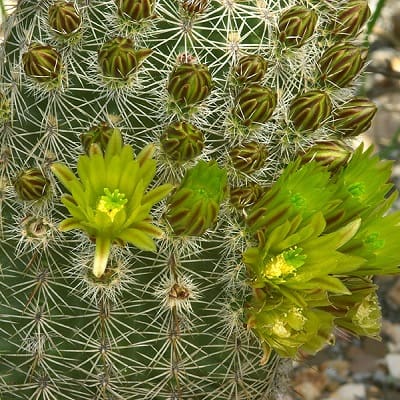
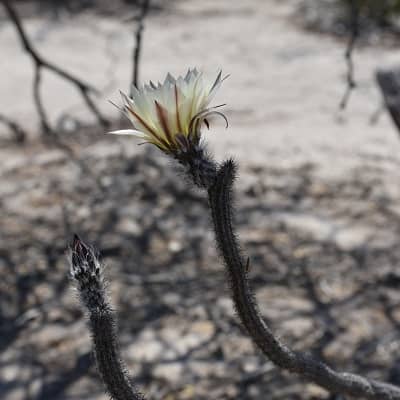
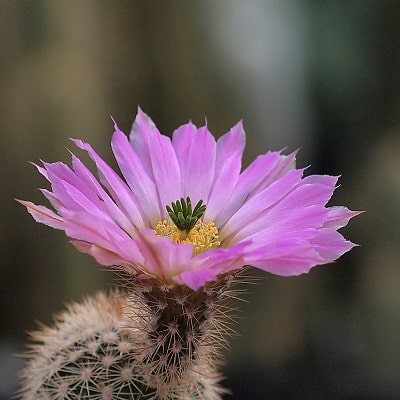
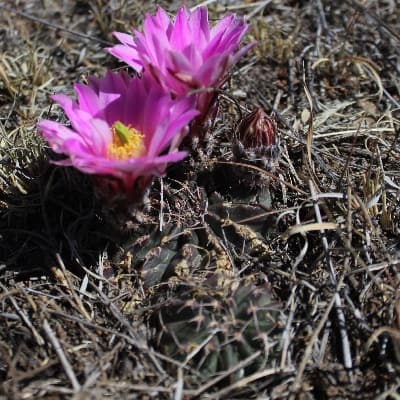
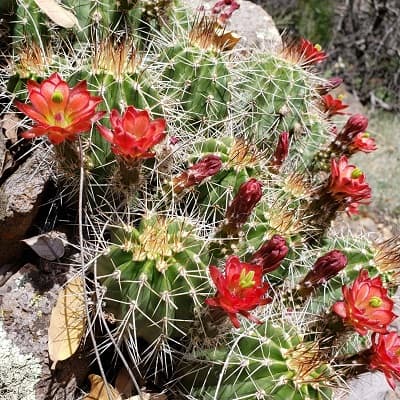
Related Post:
1,000 Types of Cacti With Pictures
Echinocereus acanthosetus

Echinocereus acanthosetus is a type of cactus that tends to grow in clusters. During dry periods, it shrinks into the ground for protection. The stems of this species are typically 1 to 2 inches thick and have around 9 ribs. They are adorned with 5 to 8 hairlike spines that flail outward. The flowers of Echinocereus acanthosetus range in color from magenta to white, adding to their charm.
Echinocereus adustus

Echinocereus adustus is a cactus species that usually grows alone. It has 0 to 1 central spine and about 8 radial spines. The flowers of Echinocereus adustus are relatively small, measuring up to 2 inches in diameter.
Echinocereus adustus subsp. schwarzii

Echinocereus adustus subsp. schwarzii is a unique variety closely related to Echinocereus adustus. It features more central spines, ranging from 1 to 5, and as many as 15 radial spines. The flowers of this subspecies are impressive, reaching lengths of up to 3 inches and diameters of 2.5 inches.
Echinocereus arizonicus

Echinocereus arizonicus is known for its deep red to bright orange-red flowers. Some of these flowers have a lighter yellow-green center, creating a striking contrast.
Echinocereus arizonicus subsp. matudae

Echinocereus arizonicus subsp. matudae is a type of Echinocereus cactus that forms large tufts, branching from the base. It is one of the largest species in this genus, with stems that can grow up to 20 inches tall and 5 inches in diameter. Compared to the typical Echinocereus coccineus, the stems of subsp. matudae are slightly larger. Additionally, it has fewer ribs and shorter, thicker spines. Despite its similarities to Echinocereus coccineus, Echinocereus matudae is valued by collectors for its distinct characteristics.
Echinocereus armatus

Echinocereus armatus is a cactus with beautiful large pink flowers. The center of the flowers often appears clearer and may have a greenish hue. This species has 1 or 2 sharp light brown spines.
Echinocereus barthelowanus

Echinocereus barthelowanus is a cactus known for its dense clusters of stems, forming large cushions that can reach up to 32 inches wide. The branches in these clusters are connected by fragile links, making them prone to falling apart when handled. Sometimes, larger clusters may be mistaken for groups of seedlings rather than individual plants. Echinocereus barthelowanus is not well understood, adding to its intrigue.
Echinocereus bonkerae
Echinocereus bonkerae subsp. apachensis

Echinocereus bonkerae is a type of cactus known as the chocolate-scented hedgehog. It is one of the many regional forms of the highly variable Echinocereus viridiflorus species. Echinocereus bonkerae stands out with its stocky body covered in closely spaced yellowish pectinate spines. The most unique characteristic of this cactus is its chocolate-scented flowers. The spines on the base often have white wool belts, while the upper part of the plant displays typical spines. Not all seedlings exhibit this hairy phase.
Echinocereus brandegeei

Echinocereus brandegeei is a highly variable cactus species. The stems of this plant grow in clusters, ranging from just a few stems to large mounds over 6.5 feet wide. The spines of Echinocereus brandegeei also exhibit variability.
Echinocereus bristolii

Echinocereus bristolii is a compact species that closely resembles Echinocereus reichenbachii in its general appearance. However, it stands out with its larger flowers and somewhat bigger stems. The stems of Echinocereus bristolii are covered in thin white spines with dark tips.
Echinocereus canus

Echinocereus canus is a remarkable cactus with white spines. It is one of the few cacti that produce green flowers. The solitary stems of Echinocereus canus are mostly covered in white spines, giving it a shaggy appearance. The juvenile stage of this cactus is characterized by long, white, hair-like spines arranged in horizontal bands around the stem.
Echinocereus carmenensis

Echinocereus carmenensis, also known as the chocolate-scented hedgehog, is one of the many local forms of the variable Echinocereus viridiflorus species. It stands out with its stocky body covered in tight yellowish pectinate spines and uniquely scented flowers with a delightful chocolate fragrance. The yellowish-white spines only appear when the plant reaches a height of 0.8 to 1.2 inches. The base of older plants often displays belts of white wool, with typical spines above. However, not all seedlings showcase this hairy phase.
Echinocereus chloranthus

Echinocereus chloranthus is similar to Echinocereus viridiflorus but with some distinctions. It has elongated stems with a bristly appearance and horizontal color banding. The lower central spines are longer and curved, and the flowers usually appear lower down on the plant, often below the middle. When not in bloom, it can be mistaken for Echinocereus dasyacanthus at first glance.
Echinocereus chloranthus subsp. rhyolithensis

Echinocereus chloranthus subsp. rhyolithensis is a cactus with striking red spines. It is found in New Mexico and is known for its bristly appearance.
Echinocereus cinerascens

Echinocereus cinerascens is an open, clump-forming cactus that produces abundant bright pink or purple blooms. The flowers can reach up to 4.7 inches in diameter and eventually develop into delicious edible fruits. This species is quite variable in appearance.
Echinocereus cinerascens subsp. septentrionalis

Echinocereus cinerascens subsp. septentrionalis is a variety of the wide-ranging and variable Echinocereus cinerascens. As its name suggests, it is found in the northern part of its range above 1200 meters. It can be distinguished from the typical species by its stems, which reach around 2.4 inches in diameter and have 6 to 8 ribs. The flowers, like other varieties, are showy, pink, or purple, and can grow up to 4.7 inches in diameter.
Echinocereus cinerascens subsp. tulensis

Echinocereus cinerascens subsp. tulensis typically has stems that are 1.6 to 2.4 inches in diameter, with 4 to 7 ribs.
Echinocereus coccineus

Echinocereus coccineus is a clumping cactus that forms large colonies of up to 50-100 stems per plant at maturity. The stems can range from nearly spineless to densely spined. This species exhibits a wide variety of spine colors.
Echinocereus coccineus subsp. paucispinus

Echinocereus coccineus subsp. paucispinus has stems that are approximately 2.4 inches thick, with 5 to 8 narrowly furrowed ribs that are spaced about 0.2 to 0.4 inches apart. It typically has 0 or 1 central spine, which measures around 1.4 inches in length, and 3 to 6 curved and straight radial spines. The flower of this subspecies is funnel-shaped, about 2 inches long, and usually red with a hint of orange. It has 7 stigma lobes.
Echinocereus coccineus subsp. rosei

Echinocereus coccineus subsp. rosei is a single or clustered species that forms large compact clumps, sometimes with up to 40 stems. It can be distinguished from closely related species by the presence of long white wool in the areoles of the ovary and fruit. The flowers of this subspecies are very showy, measuring 1.6 to 2.4 inches long and can vary in color, ranging from scarlet to orange or pink.
Echinocereus ctenoides

Echinocereus ctenoides is a cylindrical cactus closely related to Echinocereus dasyacanthus and may not be distinct enough to be classified as a separate species. Its stems feature bands of pink and gray, similar to the rainbow cactus (Echinocereus rigidissimus). The flowers of Echinocereus ctenoides are yellow, orange, or a combination of both, and they are comparatively large for the size of the plant.
Echinocereus dasyacanthus

Echinocereus dasyacanthus is a low-growing cactus that can be unbranched or branch from the base, forming loose clumps with up to 20 stiff branches in old age. Its stems are covered with spines that can vary in color depending on the growing conditions. Each year, new spines create distinct color bands around the stem, resembling a rainbow, although less prominent than the Arizona Rainbow Cactus (Echinocereus rigidissimus). This species exhibits considerable variation.
Echinocereus dasyacanthus subsp. rectispinus

Echinocereus dasyacanthus subsp. rectispinus is a morphological or local form of Echinocereus dasyacanthus. It can be recognized by its slightly longer brown, purplish, violet, or black central spines.
Echinocereus davisii

Echinocereus davisii is one of the smallest cacti in the world and is extremely diminutive in size. It mainly grows below ground, making it mostly subterranean. This species usually doesn’t produce offsets. Echinocereus davisii is unique among the Echinocereus viridiflorus complex due to its small size and reduced number of ribs, ranging from 6 to 10. Unlike other related species, the ovary and fruit of E. davisii don’t have wool on their areoles.
Echinocereus engelmannii

Echinocereus engelmannii is a cactus species that displays high variability, often leading to controversies regarding its classification. The spines of this species can vary in color, giving rise to disputed varieties such as chrysocentrus (yellow-spined form) and purpureus (dark purple-spined form). Extreme variations are often found within populations that include plants that could be assigned to other named varieties or cannot be assigned to any specific variety.
Echinocereus engelmannii subsp. fasciculatus

Echinocereus engelmannii subsp. fasciculatus has grayish central spines that can grow up to 2.8 inches long.
Echinocereus enneacanthus

Echinocereus enneacanthus is a cactus that forms dense or lax clumps, either decumbent or erect, with 20 to 100 (or even up to 500) branches. The number and length of spines can vary among individuals, providing some variation within the species.
Echinocereus fendleri

Echinocereus fendleri is a widely distributed and highly variable species with numerous geographic variations. It is a low-growing cactus that grows alone or in small clumps with 5 to 20 stems. The classic form of Echinocereus fendleri features large violet-purple flowers and attractive white or black spines. All varieties of this species produce large, red, and delicious edible fruits.
Echinocereus fendleri subsp. hempelii

Echinocereus fendleri subsp. hempelii is distinguished by its lack of central spines and the presence of strongly tubercled ribs.
Echinocereus fendleri subsp. kuenzleri

Echinocereus fendleri subsp. rectispinus

Echinocereus fendleri subsp. rectispinus stands out with its small spine clusters, typically featuring 2 to 6 radials that can grow up to 1 inch long. It usually has no central spine or, rarely, one central spine. The flowers are particularly showy, reaching sizes of up to 4.3 inches in diameter, the largest among the species. This makes it a highly desirable ornamental cactus.
Echinocereus fitchii

Echinocereus fitchii is a cactus species with brown central spines that are much longer than the white radial spines. Its large, slightly scented flowers display shades of pink-purple with a dark burgundy center.
Echinocereus fitchii subsp. albertii

Echinocereus fitchii subsp. albertii, also known as the black lace cactus, is a small cactus that can grow either as a single stem or branch when mature. It is characterized by dense, closely packed pectinate spines ranging from white to dark purple.
Echinocereus fobeanus subsp. metorni

Echinocereus fobeanus subsp. metorni is a diminutive, slowly clustering cactus. Despite its small size, it produces comparatively large flowers. However, it may take 2 to 5 years or longer for seedlings to mature and bloom.
Echinocereus grandis

Echinocereus grandis is one of the largest species among the upright-stemmed hedgehog cacti. It typically grows as a solitary plant but can occasionally branch from the base, forming small clusters of up to 15 stems. The branches grow directly from the ground, and the weight of the stems sometimes causes them to lean or lay down. In cultivation, Echinocereus grandis often grows with single, columnar stems.
Echinocereus gurneyi

Echinocereus gurneyi has dark green stems that are approximately 4 inches thick. Its standout feature is its orangish-red flowers.
Echinocereus klapperi

Echinocereus klapperi is a clustering cactus that can grow over 100 heads per clump. It displays beautiful orange-red flowers with short tube-like shapes. The spines on this cactus contribute to its whitish appearance.
Echinocereus knippelianus

Echinocereus knippelianus often forms clumps of as many as 50 stems, rarely rising above ground level. The stems are plump and green, with a big taproot and bristly spines. This species produces pink flowers at the sides.
Echinocereus knippelianus subsp. kruegeri

Echinocereus knippelianus subsp. kruegeri is a miniature form with a fat green body and soft bristly spines. Its flowers are either whitish or flesh-colored and appear at the center of the stems.
Echinocereus koehresianus

Echinocereus koehresianus has a whitish appearance due to the color of its spines. This species produces funnel-shaped flowers on the sides of its stems. The flowers are huge, growing up to 4-6 inches long, and display vibrant bright orange-red colors. Each flower has a long hairy tube and 9 green stigma lobes.
Echinocereus laui

Echinocereus laui is a small cactus species that clusters profusely from the base, forming clumps with up to 20 stems. Despite its size, it produces deep pink to clear violet flowers, adding a touch of beauty to its appearance.
Echinocereus longisetus

Echinocereus longisetus has long bristle-like white spines. Its erect stems can grow up to 12 inches long and are less than 3 inches in diameter. The cactus typically has 17 or fewer ribs.
Echinocereus mapimiensis

Echinocereus mapimiensis is a small cactus that offsets and forms compact mounds. It has white and caramel spines and produces small rusty-colored flowers. Over time, it can create clumps up to 10 inches in diameter.
Echinocereus maritimus

Echinocereus maritimus is a much-branched, mounding cactus that forms colonies with cylindrical stems up to 12-16 inches high and 2-6.5 feet wide. A single colony can have as many as 20-300 stems. During spring, it flaunts its clear yellow flowers to the sun, while conveniently hiding them from the moon.
Echinocereus maritimus subsp. hancockii

Echinocereus maritimus subsp. hancockii is larger than subsp. maritimus, with stems 2.5-2.75 inches in diameter. It features stronger spines and occurs in smaller clumps with as many as 30 stems. Otherwise, it is quite similar to the other subspecies. When in full clusters, it can reach over 6.5 feet wide.
Echinocereus nicholii

Echinocereus nicholii, commonly known as the golden hedgehog, is a big and robust plant with extremely long stems. The stems typically curve upright and can form large clusters with as many as 30 stems, reaching up to 5 feet tall. This cactus is thickly clothed with dense golden spines, creating an almost chartreuse appearance. Additionally, its flowers, although small, are pink or pale lavender and provide a splendid contrast against the yellow spines.
Echinocereus nivosus

Echinocereus nivosus is a small upright cactus that forms compact mounds. Its flowers are large, glossy, and range in color from pink to rich purple. The flowers have bright green stamens and are narrow at the tips of the stems, reaching up to 2 inches in diameter.
Echinocereus pacificus
Echinocereus pacificus subsp. mombergerianus

Echinocereus mombergerianus forms large cushions up to 27.5 inches in diameter, with as many as 30-100 (150) individual shoots. The stems are dull green and covered with yellow-brown spines. This subspecies produces showy red flowers in abundance during spring.
Echinocereus parkeri

Echinocereus parkeri forms crowded mounds with stems that distinctly taper toward the apex. It has 7-10 deeply tuberculated ribs and 10-13 radial spines. The flowers of this cactus are magenta to deep pink, with white throats.
Echinocereus pectinatus

The rainbow cactus (Echinocereus pectinatus) usually remains as a single stem, but old plants may branch and form loose clumps. The spines are yellow, pinkish, or brownish, loosely pressed to the surface or spreading widely, creating a pectinate appearance. This species produces beautiful, brightly colored flowers with spiny tubes. As they mature, the flowers develop into gooseberry-like fruits that are rich in sugar and said to be delicious.
Echinocereus pentalophus

Echinocereus pentalophus is a mat-forming cactus with many crowded finger-like stems. Established plants can reach a height of 8 inches and a width of 39 inches. It creates a visually striking sight when in bloom, making it stand out within the genus Echinocereus.
Echinocereus pentalophus subsp. leonensis

Echinocereus pentalophus subsp. leonensis is a clumping, erect, or semiprostrate cactus. It produces secondary growth through underground or surface stolons, rapidly forming large clumps. This subspecies has erect stems with 6 to 8 ribs and up to 9 spines per areole. Its stems are thicker than those of other varieties.
Echinocereus pentalophus subsp. procumbens

Echinocereus pentalophus subsp. procumbens distinguishes itself from the standard species with its semi-prostrate stems, which are the thinnest among the subspecies. Additionally, its stems are deeper green in color, have 4 to 5 ribs, and feature 5 to 7 spines per areole. This subspecies presents a stunning sight when in bloom, with few equals within the genus Echinocereus.
Echinocereus polyacanthus

Echinocereus polyacanthus is a low-growing, solitary, or clumping cactus that forms large cushions, with generally fewer than 50 but occasionally hundreds of stems. This species is highly variable, with several different-looking varieties united by their bright red blooms and rounded petals.
Echinocereus poselgeri

Echinocereus poselgeri has tall and slender, dark-colored stems that can reach up to 3.9 feet long and 0.8 inches in diameter. Its flowers are pink-rose to mauve-magenta in color.
Echinocereus primolanatus

Echinocereus primolanatus is a very peculiar species, usually solitary. Young plants initially have stems that are covered with very fine and thin hairs. The flowers, which are up to 3.5 inches broad, are sensationally large compared to the small size of the plant. They display dark pink color with purple glimmer and are highly showy. The flower tube is densely covered by white felt, scales, and bristles. The flowers can last for 4–5 days.
Echinocereus pseudopectinatus

Echinocereus pseudopectinatus is a highly prized species in collections due to its dull pink spines and the presence of very showy, huge magenta blooms. It is distinguished by its unusually thin, bristle-like spines that surround the flowers and fruits.
Echinocereus pulchellus

Echinocereus pulchellus has stems that are 1 to 2 inches thick, with 9 to 12 ribs and 3 to 7 inconspicuous spines per areole. It produces pink or white flowers.
Echinocereus reichenbachii

Echinocereus reichenbachii is a slowly branching cylindrical-shaped cactus that is often clumping. It typically has up to 12 branches covered in strongly pectinate, appressed, and truly lacy spines. The flowers of this species are very showy, fragrant, and typically vary in size, often growing up to 2.4 to 2.8 inches long and fully as broad. They open during the day, always closing at night, and occasionally open on the second day. The flowers are purple with hues ranging from light to dark. The base of the flowers is clothed in dense greyish wool.
Echinocereus reichenbachii subsp. baileyi

Echinocereus reichenbachii subsp. baileyi lacks central spines and typically has around 16 interlacing radial spines. These spines are bristly and can vary in color, appearing white, yellowish, fox red, brown, or pink. The flowers of this cactus are funnelform, magenta-pink in color, and grow close to the ends of the stems’ youngest areoles. The young areoles are white and woolly.
Echinocereus reichenbachii subsp. caespitosus

Echinocereus reichenbachii subsp. caespitosus usually lacks central spines and is weakly distinguished from the typical “reichenbachii”. A few specimens may have 1 or 2 central spines, but in most cases, central spines are not present, resulting in a uniform appearance across the stem surface. This feature gives the entire plant a lacy spines appearance.
Echinocereus reichenbachii subsp. perbellus

Echinocereus reichenbachii subsp. perbellus lacks central spines and has fewer than 20 variegated radial spines, which are less pectinate compared to E. reichenbachii. This subspecies readily produces flowers, making it a beautiful sight when in bloom, usually in May to June.
Echinocereus rigidissimus

Echinocereus rigidissimus is a low-growing, solitary (very rarely branching) cactus. This species is a popular choice among collectors for its dull pink spines and the spectacular display of its large, colorful flowers. The stems of this cactus can reach up to 4-8 inches in diameter, and the dense interlocking spines create a visually striking pattern. The cactus is commonly referred to as “Arizona Rainbow” due to the spines on each year’s growth forming a differently colored band, reminiscent of a rainbow.
Echinocereus rigidissimus subsp. rubispinus

Echinocereus rigidissimus subsp. rubispinus is distinguished by its very short dusty red-purple spines (not pink or white) and dull purple-red (not green) stigma lobes. This subspecies is also up to 50% smaller in all its parts. Its blossoms are bright magenta-red and are large and showy, creating a stunning contrast against the small stem. The unique appearance of its spination makes it one of the most desirable Echinocereus species.
Echinocereus russanthus

Echinocereus russanthus is usually a single-stemmed cactus but may branch and form clusters, with some having as many as a dozen stems. The spines radiate in all directions and are interlocking, bristly, and typically reddish to brown. This species produces rust-red flowers, often with darker purplish-maroon mid-stripes.
Echinocereus russanthus subsp. fiehnii

Echinocereus russanthus subsp. fiehnii is a caespitose cactus that forms large cushions up to 27.5 inches in diameter, often with 30-100 (or up to 150) individual shoots branching from the base or sides. The dull green stems are covered by yellow-brown spines. In spring, it produces very showy red flowers.
Echinocereus scheeri

Echinocereus scheeri is a cactus that grows in a trailing manner and produces eye-catching trumpet-shaped flowers. This species is known for its wide distribution and its ability to vary in flower size, color, habit, and spination. The stems of Echinocereus scheeri have 6-10 tuberculate ribs, and its flowers can be pink, orange, or magenta.
Echinocereus scheeri subsp. gentryi

Echinocereus scheeri subsp. gentryi is a distinct variety that features short spines, making the stems appear naked and cucumber-like. It produces pale rose, showy trumpet-shaped flowers.
Echinocereus schmollii

Echinocereus schmollii is a small cactus species that usually grows alone or with few branches. It has tuberous roots and thin, limp stems that require support from nearby bush branches when grown in the wild. When cultivated, the stems tend to snake around if not given additional support. The plant produces striking funnel-shaped flowers that range in color from pink to magenta at the tips of older stems.
Echinocereus sciurus

Echinocereus sciurus is a densely clumping cactus species with numerous short, upright heads covered in slender, short spines. When multiple plants grow together, they form clumps that can sometimes reach a breadth of around 24 inches. The species produces large, glossy pink to rich purple flowers near the tips of the stems.
Echinocereus scopulorum

Echinocereus scopulorum is an unbranched cactus with a short cylindrical stem that typically has 13-19 ribs. The plant produces intriguing flowers with purple inner tepals that have darker proximal portions and mid-stripes. The thin and delicate tips of the petals complement the dark yellow anthers, while the filaments and throat appear greenish.
Echinocereus sharpii

Echinocereus sharpii stands out with its darker-colored stems compared to other subspecies. The bodies of this cactus are around 0.8 to 2.4 inches thick and have 11 to 17 ribs, along with 7 to 14 spines per areole. Its flowers can be magenta or white, and when in bloom, it becomes a captivating sight, especially during spring.
Echinocereus spinigemmatus

Echinocereus spinigemmatus is a caespitose cactus that forms lax clumps of 7-10 stems. The spikes are yellow, and the cactus produces beautiful flowers that range in color from pinkish lilac to magenta. The flowers have spiny tubes, adding to their visual appeal.
Echinocereus stolonifer subsp. tayopensis

Echinocereus stolonifer subsp. tayopensis is a clumping cactus that propagates through underground or surface stolons, forming large colonies of stems partly covered by spines. The stems are ovoid to shortly cylindrical, reaching up to 6 inches in diameter and about 6 inches tall. The cactus typically has up to 15 mm long radial spines.
Echinocereus stramineus

Echinocereus stramineus is a mounding cactus that forms large, compact clusters with 100 or more stems, occasionally reaching up to 500. The clusters are rounded and can be approximately 24 to 36 inches in diameter.
Echinocereus stramineus subsp. conglomeratus

Echinocereus stramineus subsp. conglomeratus is an erect cactus with long white pellucid spines. This subspecies has smaller and more open flowers, smaller fruit, higher rib numbers, and glassy white spines.
Echinocereus subinermis

Echinocereus subinermis is the least armed species in the genus, with very short spines and 5-9 ribs. Despite its lack of spines, it produces huge yellow flowers, and the floral tube has a light covering of wool.
Echinocereus subinermis subsp. ochoterenae

Echinocereus subinermis subsp. ochoterenae is distinguished by its thick, slightly elongated stems covered in short dark central spines. This subspecies has around 10 ribs with 1-4 short dark central spines. The flowers are very showy, usually canary yellow, but smaller compared to other varieties of Echinocereus subinermis.
Echinocereus triglochidiatus

Echinocereus triglochidiatus is a mounding cactus that forms bulbous piles of stems ranging from a few to hundreds. The plants can show significant variation in appearance and are known for their bright red blooms and rounded petals. This species has the widest distribution among the Echinocereus species and exhibits the most variability in appearance.
Echinocereus triglochidiatus subsp. mojavensis

Echinocereus triglochidiatus subsp. mojavensis is an erect cylindrical cactus that often forms large clumps with more than a hundred heads, but clusters with 500-800 heads have been reported. This subspecies is commonly known as the Mojave hedgehog cactus.
Echinocereus viereckii

Echinocereus viereckii has spines rarely longer than 1 inch and 6 to 9 tuberculate ribs.
Echinocereus viereckii subsp. morricalii

Echinocereus viereckii subsp. morricalii is an unusual-looking cactus that grows in clusters. The stems are almost spineless, contributing to a unique appearance. This subspecies produces pale-colored, twisted central spines and very showy flowers.
Echinocereus viridiflorus

Echinocereus viridiflorus is a mounding cactus with small stems and yellow flowers. This species is found across central New Mexico and the Texas Panhandle, extending to South Dakota.
Echinocereus viridiflorus subsp. correllii

Echinocereus viridiflorus subsp. correllii is a variety of E. viridiflorus characterized by its yellow spines. It is found near Marathon, Texas.
Echinocereus waldeisii

Echinocereus waldeisii is a unique species that typically forms a single stem that can branch out over time. The stems clamber through adjacent vegetation and originate from a tuberous, dahlia-like rootstock.
Echinocereus websterianus

Echinocereus websterianus can grow up to about 50 stems in a relatively large cluster. When grown as solitary plants, they often develop a single columnar stem. The flowers of this cactus can vary in color, ranging from whitish to pale pink, deep pink, violet, or occasionally yellowish.
Echinocereus weinbergii

Echinocereus weinbergii has stems that are 2 to 6 cm thick, featuring 14 or 15 ribs and 8 to 11 spines per areole. It produces diurnal flowers that are bright pink. The petals are narrowly acute, and the anthers are dark yellow, while the filaments and throat appear greenish.
Taking Care of Echinocereus Cactus
If you’re new to gardening and want a low-maintenance cactus, Echinocereus is the perfect choice for you. These cacti grow slowly but can live a long time if you get the essentials right. So, how do you take care of Echinocereus cacti? Let’s dive in and discover some simple tips!
Light
Echinocereus cacti need bright light to thrive. Placing them near a sunny balcony is ideal. They can handle slightly cold weather, but they prefer warmer temperatures. Avoid keeping them in damp areas, as it could hinder blooming and cause the plant to wither.
Watering
Echinocereus cacti don’t require frequent watering. Wait until the top layer of soil appears dry and crusty before watering. During the summer, watering once every two weeks is sufficient, while in winter, watering once a month should do the trick. If you live in a humid area, watering even less is recommended. Overwatering can harm the plant, so be cautious.
Soil
Well-drained soil is essential for Echinocereus cacti. A cactus mix from a nursery or online store is perfect. If you already have other cacti at home, their soil can also work well, as long as it drains properly.
Fertilizing
During the summer, use a diluted cactus fertilizer to promote flowering and faster plant growth. Avoid concentrated fertilizers as they won’t benefit the plant. Regularly applying light fertilizer is the best approach to keeping these plants healthy.
Pests and Diseases
Scale insects and mealybugs can affect Echinocereus plants, but dealing with them is relatively easy. Repot the plant once a year, avoid overwatering, and use a natural insecticide like neem oil to keep pests at bay.
Propagating Echinocereus Plants
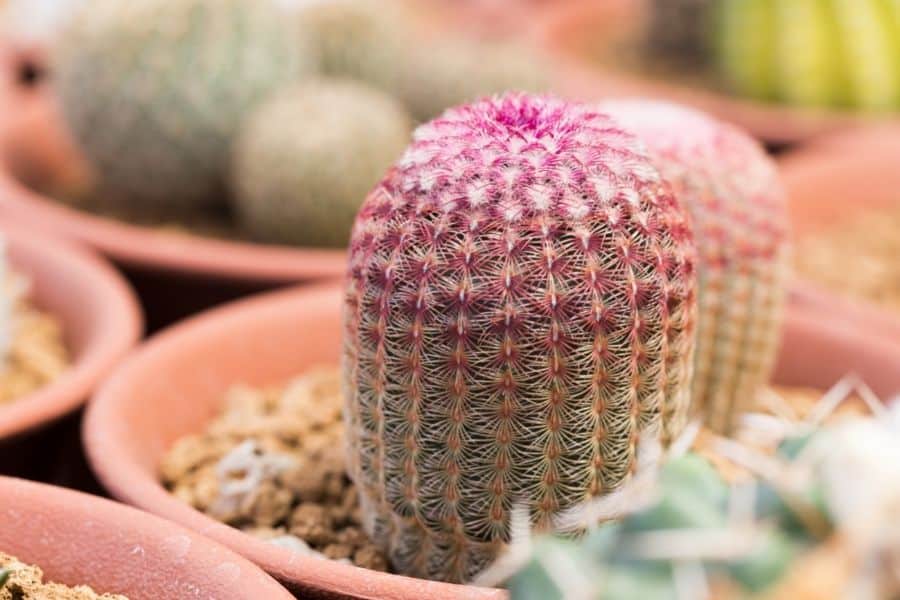
Echinocereus plants are not only beautiful but also easy to propagate. Whether you’re an experienced gardener or just starting out, you can try these simple steps:
- Using Stem Cuttings: Take a small stem from a fully mature Echinocereus plant. Allow it to air dry for a while to remove excess moisture. Repot the stem in a well-drained cactus mix, spray it with diluted fertilizer, and place it in a sunny spot. Soon, you’ll witness the stem growing and blooming!
- Using Seeds: If you prefer starting from seeds, purchase some from a nursery or an online store. Sprinkle them over a well-drained potting mix and keep the soil slightly damp and moist for germination. With the right conditions, you should see the plant sprout within two weeks.
Remember, Echinocereus plants have shallow roots, so avoid burying them too deep to prevent rot and damage. Additionally, repotting them once a year will ensure strong roots and optimal growth. Enjoy multiplying the beauty of your Echinocereus plants through propagation!
